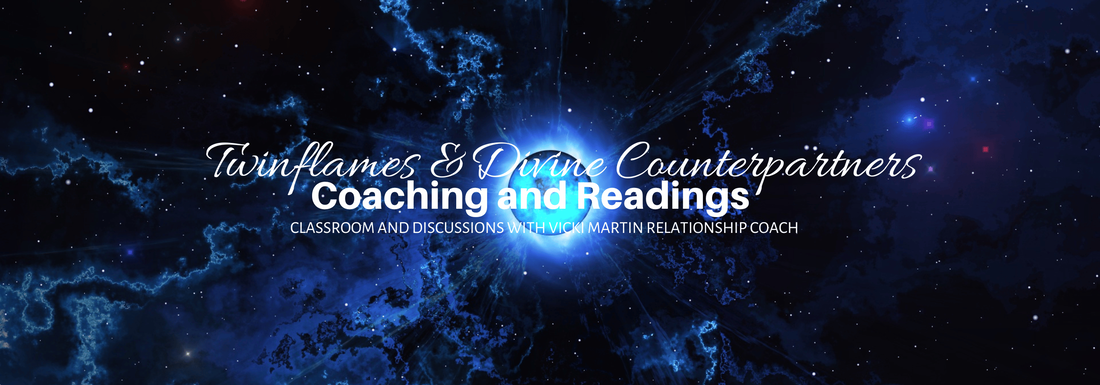-
Loveinthe12thDimension
- Beauty & Aesthetics >
-
Mind, Body, Spirit & Free
>
- Additional Services >
- Ascended Relationships >
-
Metaphysics Healing
>
- Acupressure & EFT
- Ascension Symptoms
- Balancing You Overall
- Blocked Emotions
- Chakra Clearing & Alignment
- Energy Healing
- Entity Removal & Clearings
- Hypnosis Tracks
- Meditation Coaching
- Muscle Testing
- Polarity Reversals
- Programming the Subconscious
- Protection Techniques
- Journaling & Shadow Work
- Soul Journeying & Retrieval
- Stones & Crystals
- Universal Laws
- ALL READINGS/CHARTS >
- BLOG
- Store
- Manifesting the life you Want
|
🌟 Life Advice for Stress-Free Living 🌟 🔹 If it's fragile, let it break! 🔹 Hey there, wonderful souls! 🌸 Sometimes in life, we come across people or situations that seem delicate, but we try so hard to keep them intact. 🧐 Well, here's a gentle reminder: it's okay to let go! 💫 If something or someone isn't meant for you, trying to hold on might only cause unnecessary stress and struggle. 💆♂️ Take care of your mental well-being! 💆♀️ It's vital to keep your sympathetic system regulated and out of "flight or fight" mode. 🧠 When we choose to allow anyone or anything to fall away that isn't right for us, we create space for positive energies to flow into our lives. ✨ Letting go can be liberating and lead to a more fulfilling life journey. ✨ Embrace Change and Growth! ✨ By accepting that not everything is meant to last, we open ourselves up to new possibilities and experiences. 🌱 So, don't be afraid of change—it's often a catalyst for personal growth and transformation. 🌈 Remember, it's all about finding harmony in your life and surrounding yourself with what truly resonates with your heart. ❤️ So, breathe, let go, and embrace the beautiful journey ahead! The Red Ferrari
Author of Get the Soulmate and Dump the Rest Love In The 12th Dimension How To Manifest Your Soulmate Rediscovering Abundance Next Blog Post Perfect For You
0 Comments
Are you looking to enter the dating scene as a confident and self-assured individual? Finding a partner who appreciates your worth starts with valuing yourself and exuding that self-respect throughout the dating process. In this article, we'll explore practical tips to maintain a high-value position when dating, from choosing the right photos for your profile to conducting yourself during those first encounters. Let's dive into how you can project confidence and stay true to yourself, all while seeking a meaningful connection. Entering the world of dating as a high-value individual means valuing yourself and presenting your authentic self with integrity. When it comes to online dating, the photos you choose for your profile play a significant role in making a positive and genuine impression. We'll explore the importance of self-respect and confidence in your dating journey, and we'll provide you with practical tips from selecting photos that accurately represent who you are to how to act confidently. By embracing your worth and choosing the right images, you can confidently showcase your true self to potential matches and attract connections that appreciate you for the amazing person you are. 1. Embrace Your Self-Worth Before you dive into the dating pool, take a moment to recognize your self-worth. Understand the unique qualities that make you a catch and embrace your individuality. Confidence in yourself will naturally attract others who appreciate and respect what you have to offer. 2. Set Firm Boundaries Maintaining a high-value position means having clear boundaries and sticking to them. Establish what you are comfortable with in a relationship and communicate those limits with respect. By doing so, you demonstrate self-respect and create a foundation for a healthier connection. 3. Authentic Profile Photos Your dating profile is often the first impression potential suitors will have of you. Choose photos that genuinely represent your personality, interests, and appearance. Avoid overly edited or misleading pictures; instead, showcase your authentic self, fostering trust and confidence in your online presence. 4. Assertive Communication Confidence in communication is key when interacting with potential partners. Be assertive in expressing your thoughts and opinions while actively listening to theirs. Mutual respect in conversations sets the stage for a relationship built on trust and open communication. 5. Selectivity is Okay Don't feel pressured to accept every date invitation that comes your way. It's okay to be selective and focus on finding someone who aligns with your values and long-term goals. Being intentional about your choices demonstrates that you value your time and are seeking a meaningful connection. 6. Prioritize Respect Seek a partner who treats you with respect and values you for who you are. Likewise, be sure to treat them with the same level of respect. A relationship built on mutual respect forms a strong foundation for a lasting connection. 7. Avoid Settling A high-value person knows their worth and doesn't settle for less. If you encounter someone who doesn't meet your standards or compromises your self-respect, it's essential to walk away. Remember, it's better to be single than in a relationship that undermines your value. 8. Be Authentic Stay true to yourself throughout the dating process. Don't change who you are or compromise your values to fit someone else's expectations. Authenticity is magnetic and will attract a partner who appreciates you for being genuine. 9. Positive Body Language Non-verbal cues can speak volumes during a first meeting. Exhibit positive body language, including good posture, eye contact, and a warm smile. This projects confidence and approachability, making it easier for others to connect with you. 10. Take Your Time Avoid rushing into a relationship. Take your time to get to know someone and assess whether you share compatible values, interests, and life goals. Taking it slow allows a deeper connection to form naturally. 11. Be Supportive A high-value person is supportive of their partner's aspirations and goals. Show genuine interest in their life, and be there to encourage and uplift them. A relationship built on mutual support is one that flourishes. 12. Prioritize Self-Care Taking care of yourself physically, emotionally, and mentally is essential. Self-care contributes to your overall well-being, boosting your self-confidence, and helping you maintain a high-value position when dating. By embracing your self-worth, setting boundaries, and staying true to yourself, you can exude confidence and stay in a high-value position while dating. Remember, finding the right partner is about mutual respect and genuine connection. Trust yourself, and you'll attract the right person who values you for the amazing individual you are. Finding the right balance between confidence and humility is crucial in the dating world. While confidence is attractive, being overly overconfident can come across as arrogant and dismissive, potentially hindering the formation of genuine connections. On the other hand, trying too hard to impress can lead to a lack of authenticity, making the other person feel uncomfortable and unsure about your true self. To strike the right balance, focus on being authentic and genuine. Embrace your true self, including your strengths and vulnerabilities. Listen actively to your date, showing interest in their thoughts and feelings, and empathize with their perspectives. Avoid overwhelming them with excessive compliments or attention, and respect their boundaries. Allow the connection to develop naturally, without pushing too hard or being overly agreeable. A successful relationship is built on mutual respect, understanding, and shared values. Be confident in yourself but also be open to learning and growing from your dating experiences. The right person will appreciate your authenticity and will be interested in the real you, not someone who is trying too hard to impress. So, stay true to yourself, and let your genuine self shine in the dating world. It's completely normal to feel unsure about whether you are what someone else is looking for in a partner. This uncertainty is a common experience in dating. Remember that dating is a process of getting to know each other, and it's okay not to have all the answers right away. The key is to be genuine and authentic in your interactions. Be yourself and let the connection unfold naturally. Instead of worrying too much about whether you meet all their expectations, focus on understanding what you are looking for in a relationship. Assess if you share common values, interests, and life goals. Communication is vital; ask questions and listen actively to learn more about each other's desires and expectations. If you feel unsure about whether you are a match, open communication is essential. Express your feelings honestly, and don't be afraid to share your uncertainties. It's okay to have open discussions about where each of you sees the relationship heading. Remember that you deserve someone who appreciates you for who you are. Trying to fit someone else's mold or pretending to be someone you're not is not sustainable for a healthy and fulfilling relationship. The right person will value you for your authentic self. Trust that the right match will embrace and appreciate the qualities that make you unique. Ultimately, stay true to yourself, and be patient as you explore the connection further. Dating is a journey of self-discovery, and it's okay to take your time in finding the right partner. In the end, genuine connections are built on understanding, respect, and acceptance of each other as individuals. The Red Ferrari Author of Get the Soulmate and Dump the Rest Love In The 12th Dimension How To Manifest Your Soulmate Rediscovering Abundance Next Blog Post Hey there! So, remember that guy with the sweet smile I mentioned earlier? Well, turns out we're a match, and we've been chatting back and forth. He seems really nice, and I've enjoyed our banter. Now, he's suggested meeting up for a drink downtown. It's both exciting and nerve-wracking at the same time! I can't help but wonder, am I ready for this? But hey, it's all part of the dating adventure, right? Guess I'll just go with the flow and see where it takes me! Wish me luck! 😊
Congratulations on matching with someone you're interested in! A first date can be an exciting but nerve-wracking experience. Here are some tips to make it a successful and enjoyable meeting:
Remember, the key to a successful first date is to relax, be yourself, and have fun. Good luck, and I hope you have a wonderful time getting to know your match! When you're meeting someone new in the dating scene, whether it's through a dating app, a mutual friend, or a social event, it's natural to feel a mix of excitement and nerves. Here are some additional tips to help you navigate the process and make a positive impression:
Entering the dating scene and meeting someone new can be a thrilling yet nerve-wracking experience. It often starts with that exciting moment when you connect with someone who catches your eye, whether it's through a dating app, a mutual friend's introduction, or a chance encounter at a social event. From the moment you decide to take the plunge and explore this potential connection, a whole world of possibilities opens up. As you prepare to meet this person for the first time, it's normal to feel a mix of emotions. Excitement, curiosity, and a touch of nervousness may flood your thoughts as you wonder what this encounter might lead to. It's essential to remember that meeting new people is an integral part of the dating journey. Not every encounter will blossom into a romantic relationship, but each interaction offers an opportunity to learn more about yourself and the kind of partner you're looking for. One of the keys to successful dating is authenticity. Embrace your true self and show up as you are. Genuine connections are built on honesty, so don't be afraid to share your interests, passions, and life experiences. Equally important is actively listening to your date's stories and experiences. Pay attention to their passions, values, and what makes them tick. Engaging in meaningful conversation lays the foundation for a deeper connection. As you embark on this new meeting, remember to be patient and take your time. Building a strong and lasting connection is not a race; it's a journey. Avoid putting pressure on yourself or the other person to make immediate decisions about the future. Let the relationship evolve organically and naturally, allowing both of you to discover if there is a genuine compatibility. Along the way, you may encounter some bumps in the road, including rejection or feelings of uncertainty. It's essential to handle such situations with grace and respect. Not every person you meet will feel the same way, and that's perfectly normal. Learning to handle rejection and practicing resilience will make you stronger and more open to finding the right person for you. Throughout your dating experiences, always prioritize open and honest communication. Express your feelings, intentions, and boundaries clearly, and encourage your date to do the same. Healthy relationships are built on effective communication, trust, and mutual respect. Lastly, don't forget to have fun! While dating can sometimes feel overwhelming, it's essential to enjoy the journey. Embrace the excitement of getting to know new people, trying new activities, and creating lasting memories. So, as you prepare to meet someone new on this dating adventure, remember to be yourself, keep an open heart, and embrace the possibilities that lie ahead. The right connection may be just around the corner, and this experience could lead to a beautiful and meaningful relationship. Good luck on your journey! The Red Ferrari Author of Get the Soulmate and Dump the Rest Love In The 12th Dimension How To Manifest Your Soulmate Rediscovering Abundance Next Blog Post For You.. In the aftermath of a breakup, navigating emotional ties with an ex-partner can be a challenging and emotionally charged experience. Despite the end of the romantic relationship, both individuals may find themselves still entangled in a web of emotions, memories, and shared history. Understanding and untangling these complex connections is crucial for healing, personal growth, and moving forward. This blog delves into the intricacies of post-breakup dynamics. It starts by acknowledging that emotional ties with an ex are not uncommon and can be influenced by various factors. We will explores the different reasons why individuals might hold onto emotional ties with an ex. These reasons could range from unresolved feelings, nostalgia for the past, hope for reconciliation, to a fear of letting go and starting anew. It sheds light on how emotional connections can be shaped by comfort, familiarity, guilt, or the need for validation. Readers will find valuable insights on how to deal with an ex-partner who still holds emotional ties. Communication is highlighted as a key aspect to address this situation. It emphasizes the importance of open and honest conversations with the ex-partner to clarify feelings, intentions, and establish clear boundaries. The blog emphasizes that it is natural for both parties to experience conflicting emotions and offers guidance on handling this complexity. It encourages individuals to prioritize their emotional well-being and make choices that align with their own happiness and growth. Additionally, the blog suggests practical steps for creating distance and emotional closure if staying friends with the ex is not immediately feasible. It emphasizes that taking time apart to heal and gain clarity can be essential in the journey towards emotional recovery. Throughout the blog, the message centers around self-empowerment and understanding that individuals are not responsible for their ex-partner's emotions or choices. Instead, the focus should be on self-care and personal growth as they untangle the emotional ties and pave the way for a healthier future. Men, like women, can hold onto individuals they don't want a relationship with for various reasons. It's important to note that human behavior is complex, and individuals' motivations can differ based on their unique experiences, emotions, and personalities. Here are some common reasons why some men might hold onto women they don't want a relationship with:
It's essential to remember that these reasons are not exclusive to men; women can also find themselves in similar situations. Additionally, not all men behave this way, as individual differences play a significant role in how people approach relationships. If you find yourself in a connection with someone who doesn't want a relationship, it's important to have a candid conversation about both of your intentions and expectations. Setting clear boundaries and being true to yourself will help you make decisions that are in line with your emotional well-being and long-term happiness. When dealing with an ex-partner who still has emotional ties, the situation can become complex. Emotional ties may stem from unresolved feelings after a breakup, nostalgia for the shared history, or hope for reconciliation. The comfort of familiarity and the fear of letting go can also contribute to holding onto the connection. In some cases, seeking validation, feeling guilty about the breakup, or the need for emotional support may also influence the decision to maintain ties. If you find yourself in this situation, open and honest communication with your ex is essential. Clarify your feelings and intentions, and establish clear boundaries to ensure both parties are on the same page. Sometimes, taking some time apart to heal and gain emotional closure might be necessary. Remember that you are not responsible for your ex's emotions or choices, and prioritizing your well-being is crucial during this time. Seeking support from friends, family, or a therapist can provide valuable guidance as you navigate these emotions and complexities. Men may hold onto women they don't want a relationship with for various reasons. Some common factors include seeking comfort and companionship without commitment, fearing hurting the woman's feelings, boosting their ego, or being unsure about their own future readiness for a serious relationship. Additionally, avoiding confrontation, using someone for benefits, and fearing loneliness can also contribute to this behavior. Open and honest communication is essential in such situations, and setting clear boundaries is crucial for personal well-being and happiness. It's important to remember that not all men behave this way, and individual motivations can differ based on their unique experiences and personalities. The Red Ferrari Author of Get the Soulmate and Dump the Rest Love In The 12th Dimension How To Manifest Your Soulmate Rediscovering Abundance Next Blog Post For You.. When your heart is totally into something, but your brain is like, "Wait a minute, this doesn't make sense!"—that's one heck of a tough situation! We've all been there, tangled up in a web of emotions and logic, not knowing what to do.
So, picture this: you're head over heels for someone or something, and it feels amazing. But here comes your brain, Mr. Rational, all like, "Hey, buddy, let's think this through. Is it really a good idea?" And there you are, stuck in the middle, torn between what your heart wants and what your head knows. The heart, oh boy, it's a mess of emotions, memories, and gut feelings. It can lead us to be head over heels for someone who might not check all the boxes on our logical checklist. It's like you're feeling this intense connection, but your brain is waving warning flags left and right. But hold up! Before you go all-in or slam the brakes, take a breather. Give yourself some time to sort through this emotional rollercoaster. Avoid making hasty decisions based solely on how you feel in the moment. Get some input from your pals, family, or even a shrink. Sometimes, an outside perspective can be a game-changer. Ask yourself why the heck you're in this pickle. What's causing this wild conflict between heart and head? Is it a clash of values, past baggage, or maybe just some subconscious thing you haven't figured out yet? Pinpointing the root of the problem can lead you to better understand yourself and what's going on. Compromise might be the magic word here. See if there's a way to find a middle ground between what your heart screams for and what your brain nags about. Life ain't always black and white, you know. Sometimes, you gotta mix a little of both to find the sweet spot. Don't forget, emotions are a legit part of being human! Trust those gut feelings and instincts, but keep a little space for that logical thinking too. It's like having a dance-off between passion and reason, and you gotta let them show their moves. If you're caught in this emotional loop more than you'd like, take a look at what's going on. Are you making the same choices over and over? Figuring that out can lead to some eye-opening personal growth. The clash between heart and head is a wild ride. Embrace it, learn from it, and don't be too hard on yourself. Go with your gut, but give your brain some love too. In the end, you'll find the path that makes the most sense for you and your happiness. Keep on cycling! Navigating the intricacies of human emotions and desires can be a daunting journey, especially when the heart yearns for something that seems incompatible with logical reasoning. This conflict between the heart and the head can lead to confusion, frustration, and indecision. It's a common experience that many individuals face at some point in their lives, as the human psyche is a blend of emotions, intuition, and reason. When your head logic is at odds with your heart's strong connection, it can be challenging to reconcile the two opposing forces. Emotions, often influenced by chemistry, past experiences, and subconscious factors, can lead us to develop strong attractions or affections for individuals or situations that might not align with our logical understanding of what's best for us. One possible cause of this conflict is the dichotomy between what you logically believe is right and what your heart strongly desires. The head, with its rational thinking, evaluates a situation based on facts, practicality, and long-term implications. On the other hand, the heart thrives on emotional bonds, vulnerability, and intuition. Balancing these two aspects of yourself can be difficult, especially when they pull you in different directions. It's essential to give yourself time and space to process these emotions. Avoid rushing into decisions that might be driven solely by overwhelming feelings. Seek external perspectives from trusted friends, family members, or a professional therapist to gain valuable insights and explore different viewpoints. While it may feel like a tug-of-war between your emotions and rationality, consider examining the specific reasons causing this internal conflict. Are there deeper values, fears, or insecurities at play? Understanding the root of the conflict can help you make more informed choices. Sometimes, finding a middle ground or compromise can be an option. Reflect on the long-term consequences of each choice and evaluate what aligns better with your values and life goals. Honesty and open communication, particularly in relationships, can lead to mutual understanding and potential resolutions. Remember that emotions are valid and essential aspects of being human. Trust your instincts and intuition while also acknowledging the importance of logical reasoning in decision-making. Be patient with yourself as you work through this conflict, and practice self-care to stay grounded during this emotional journey. If you find yourself repeatedly facing similar conflicts, consider examining any recurring patterns in your relationships or decision-making process. This introspection can lead to personal growth and self-awareness. The conflict between the heart's desires and the head's logic is a natural part of the human experience. Embrace the complexity of your emotions, seek clarity, and make decisions that resonate with your authentic self. By understanding and honoring both aspects of yourself, you can find a path that leads to genuine happiness and fulfillment. When you feel an intense pull or connection to a particular person, it can often be attributed to subconscious reasons that go beyond surface-level attraction. Some of these subconscious reasons might include:
Regarding the concept of a soulmate, it is a deeply held belief that there is one person in the world uniquely destined to be our perfect match. This belief is subjective and varies depending on cultural, spiritual, or personal beliefs. When we feel a soulmate connection, it often goes beyond the logical and taps into our spiritual or emotional realms. It's important to recognize that while subconscious factors can influence our attractions, the idea of a soulmate is a matter of personal interpretation. Relationships are complex, and finding a fulfilling connection often involves a combination of emotional, practical, and rational considerations. Whether a connection is destined or not, nurturing a healthy, communicative, and supportive relationship is key to building a strong and lasting bond with someone special. When it comes to relationships, many people believe in the concept of a natural pull or a strong connection towards someone who would be an ideal compatibility or destined partner. This feeling often goes beyond mere attraction and taps into a deeper sense of connection and understanding. One factor contributing to this strong connection is shared values and goals. When two individuals have similar beliefs and life aspirations, they are more likely to feel a profound sense of alignment and compatibility. Emotional intimacy is another essential element. Feeling understood, supported, and cared for by someone fosters a deep emotional bond. Chemistry and attraction also play a significant role. Physical and emotional chemistry can create an initial spark and intrigue between two people. Additionally, having complementary qualities can enhance each other's strengths and support each other's weaknesses, leading to a more fulfilling and balanced relationship. Shared experiences can strengthen the bond between two individuals. Going through significant life events together fosters a sense of togetherness and understanding. Moreover, intuitive feelings can guide us in forming connections with others. Sometimes, people experience a strong gut instinct that someone is right for them, adding to the feeling of a natural pull. While these factors contribute to a sense of destined compatibility, it's important to remember that relationships require effort and commitment from both partners. Regardless of the feeling of a natural pull, open communication, compromise, and mutual respect are crucial for building a healthy and loving partnership. In the end, whether one believes in the concept of destiny or not, finding a compatible partner involves a combination of emotional connection, shared values, and practical considerations. Nurturing a relationship with someone you have a strong connection with can lead to a meaningful and fulfilling partnership. The key is to focus on building a relationship based on understanding and growth. And who you think of when you close your eyes at night. Cheers, The Red Ferrari Get the Soulmate and Dump the Rest Love In The 12th Dimension How To Manifest Your Soulmate Rediscovering Abundance To join my fb group go Here. To schedule a session: Here To join my weekly meditation and coaching group: Here Having compassion for a narcissist can be challenging due to the nature of the disorder, but it is possible to approach the situation with empathy and understanding while maintaining healthy boundaries. Here are some steps to help you develop compassion and handle relationships with narcissistic family members or loved ones:
While there can be various factors that contribute to someone developing narcissistic traits or narcissistic personality disorder (NPD), it is not accurate to say that dating a narcissist is solely based on trauma from their past. Narcissism is a complex and multifaceted personality disorder that can have a combination of genetic, environmental, and psychological influences. It's important to note that not everyone who experiences trauma in their past develops narcissistic traits, and not all narcissists have experienced severe trauma in their early lives. Narcissism is a complex personality disorder that results from a combination of various factors. When dating someone with narcissistic traits, it's essential to be aware of their behavior and its impact on your well-being. Healthy and sustainable relationships require mutual respect, empathy, and emotional reciprocity, which can be challenging to achieve with a narcissist due to their self-centered and manipulative tendencies. If you find yourself in a relationship with a narcissist, it may be beneficial to seek support and consider setting boundaries to protect yourself emotionally and mentally. In some cases, seeking professional help, such as therapy, can provide guidance and assistance in navigating such relationships. Living with a narcissist can be extremely challenging and emotionally draining. It's essential to prioritize your well-being and find ways to cope with the situation. living with a narcissist can take a toll on your mental and emotional well-being. It's crucial to prioritize self-care and seek support when needed. If the living situation becomes too harmful or toxic, you may need to consider alternative living arrangements to protect yourself from further harm. Your safety and well-being are paramount, and seeking professional advice can help you make informed decisions about the best course of action for your situation. While living with a narcissist over a lifetime can have profound effects on individuals, it is possible to cultivate resilience, self-awareness, and a sense of empowerment. By understanding the adaptive strategies developed and finding healthy ways to cope, individuals can move towards a more fulfilling and emotionally balanced life, even within the confines of a narcissistic relationship. Living with a narcissist over time can profoundly impact various aspects of an individual's life, including other relationships. Prolonged exposure to a narcissistic environment can lead to trust and intimacy issues, affecting the ability to form close connections. Communication patterns may be affected, with individuals becoming guarded or struggling to express their needs openly. Setting healthy boundaries can become challenging, and codependent tendencies may emerge, prioritizing others' needs over their own. Constant criticism from the narcissist can severely impact self-esteem, carrying negative beliefs about oneself into other relationships. Emotional expression might be suppressed to avoid conflict, hindering authentic emotional connections. Fear of vulnerability may lead to avoidance in other relationships. Seeking approval and validation excessively may become a pattern. Recognizing these impacts and seeking support, such as therapy, can help individuals navigate the effects of living with a narcissist and develop healthier and more fulfilling relationships with others. Let's delve into more detail for each of the recommendations on how to have compassion for a narcissist and how to handle relationships with them:
Remember, having compassion for a narcissist doesn't mean sacrificing your well-being or accepting abuse. It's about understanding the complexities of their condition while prioritizing your own mental and emotional health. Balancing empathy and self-protection is key to navigating relationships with individuals who have narcissistic traits. But at the end of the day, everyone wants to be loved. Does not mean they are willing to give love back. Cracking the Code of Emotionally Unavailable Partners: Understanding and Navigating Relationships7/27/2023 Emotionally unavailable partners can develop due to various reasons, often stemming from past experiences and personal characteristics. Understanding some common factors can shed light on why a person may become emotionally unavailable in a relationship:
It is essential to recognize that emotional unavailability is not necessarily a deliberate choice or something someone can control easily. It often results from complex psychological and emotional factors developed over time. If you find yourself in a relationship with an emotionally unavailable partner, it is crucial to communicate openly and honestly about your needs and feelings. However, it is equally important to recognize that you cannot force someone to change their emotional availability. If the situation becomes unhealthy or unfulfilling, seeking professional advice or considering your own emotional well-being might be necessary. While it's not guaranteed in every situation, it is possible for a person who is emotionally unavailable to open up and engage emotionally. However, it often requires time, patience, and understanding from both parties involved. Here are some steps and considerations that may help foster a deeper emotional connection:
Fostering emotional engagement with an emotionally unavailable man requires patience, empathy, and effective communication. Firstly, establish open and honest communication as the foundation of your interactions. Encourage him to express his feelings and thoughts without judgment. For example, ask open-ended questions about his emotions, actively listen, and avoid interrupting him when he shares his thoughts. Empathy is crucial in understanding the reasons behind his emotional unavailability. Be compassionate and considerate of his past experiences and possible traumas that may have caused him to close off emotionally. For instance, if he mentions a difficult past relationship, validate his feelings and acknowledge the impact it might have had on him. Respect his boundaries and avoid pushing him to share more than he is comfortable with. Let him set the pace for emotional openness. If he prefers to take things slowly, respect that decision and avoid putting pressure on him to open up further. Shared experiences can strengthen emotional connections. Engage in activities or experiences together that both of you enjoy. This shared enjoyment can create positive associations and encourage emotional bonding. For example, if he has a hobby or interest, participate in it together to build a deeper connection. Offer support and encouragement when he does open up emotionally. Let him know that you value his emotional expression and appreciate his willingness to share his feelings. Positive reinforcement can encourage him to continue being more open in the future. Lead by example by showing vulnerability and openness yourself. When he sees that you are willing to share and be emotionally available, it may inspire him to do the same. For instance, share your feelings or experiences that relate to the topics he discusses, demonstrating that you, too, are willing to be open and vulnerable. By combining patience, empathy, effective communication, shared experiences, and leading by example, you can create a supportive environment that encourages an emotionally unavailable man to open up and engage emotionally in the relationship. Remember, however, that emotional growth is a personal journey, and it is essential for both partners to be willing to work together to build a stronger emotional connection. Cheers, The Red Ferrari Get the Soulmate and Dump the Rest Love In The 12th Dimension How To Manifest Your Soulmate Rediscovering Abundance To join my fb group go Here. To schedule a session: Here To join my weekly meditation and coaching group: Here Navigating the Complexities of Situationships: Emotional Dynamics and Impact on Relationships7/26/2023 Situationships, a term used to describe less formal and undefined relationships, are increasingly common in modern dating culture. However, the emotional dynamics and impact of these arrangements on individuals involved are often overlooked. This article explores the complexities of situationships, focusing on how engaging with others outside the relationship can lead to emotional disconnection, mismatched expectations, and potential hurt and rejection. The lack of commitment and clear boundaries can result in communication breakdown and deteriorate the situationship. By understanding and addressing these challenges, individuals can navigate situationships more effectively and preserve their emotional well-being. Even in the most casual of relationships or when two individuals are in the early stages of getting to know each other, the presence of secrets or hidden affairs can still have a significant impact. While the depth of emotional investment may not be as profound as in a long-term committed relationship, the consequences can still be damaging:
The consequences may not be as profound as in long-term committed relationships, but they can still hinder the growth of healthy connections and leave lasting emotional scars. Honesty, open communication, and respect for one another's boundaries are essential in all types of relationships, fostering an environment of trust and emotional safety. When one person in a "situationship" doesn't see anything wrong with their actions because they believe they are not in a committed relationship, it can still significantly impact the dynamics between both individuals. Even in less formal relationships, emotions and expectations can come into play, leading to various consequences: One consequence is emotional disconnection. If one party engages in intimate interactions or meetings with others while the other develops deeper feelings, it can lead to hurt and disappointment for the more emotionally invested person. Mismatched expectations can also arise in situationships. The lack of clarity about commitment and exclusivity can lead to frustration and disappointment as both individuals may have different ideas about the relationship's direction. The person who sees the situationship as casual may not consider the impact of their actions on their partner's emotions, causing insecurity and self-doubt for the more invested individual. Casual relationships can still involve genuine emotions and vulnerability, so there is a higher risk of hurt and rejection for the more emotionally invested party. Communication breakdown can occur due to the lack of clear commitment and expectations in a situationship. If one person doesn't see the need to communicate or address their actions because they view the relationship as casual, it can lead to misunderstandings and unresolved issues. Ultimately, engaging with others in ways that cause emotional distress to their partner can lead to the deterioration of the situationship. The hurt party may distance themselves emotionally or choose to end the relationship to protect their well-being. In a situationship, open and honest communication about intentions, feelings, and boundaries is essential. Both individuals should set clear expectations and understand each other's emotional needs to prevent misunderstandings and potential hurt. If both parties are not on the same page regarding commitment, they may need to reassess the relationship and determine whether it aligns with their desires. To address these issues, open and honest communication is vital. Both partners need to express their feelings, concerns, and boundaries, allowing for a mutual understanding of each other's perspectives. Setting clear boundaries and prioritizing the primary relationship can help avoid conflicts and rebuild trust if it has been damaged. Engaging in more intimate interactions or frequent meetings with others can have a significant impact on a relationship. When one partner becomes involved in such interactions, it can lead to emotional infidelity, where emotional connections meant for the primary partner are redirected to someone else. This emotional detachment can lead to feelings of betrayal and hurt in the neglected partner. A critical issue that arises from such situations is the lack of prioritization. When one partner focuses too much on another person, the primary relationship may suffer. The neglected partner may start to feel unimportant and undervalued, leading to resentment and a sense of detachment from the relationship. Communication breakdown is another common consequence. The partner who is feeling neglected may hesitate to express their feelings or concerns, fearing that they will be dismissed or ignored. On the other hand, the partner who is preoccupied with someone else may become less attentive and engaged during conversations, leading to misunderstandings and miscommunication. Jealousy and insecurity are also prevalent emotions in such situations. The partner who notices their significant other engaging more intimately with someone else may feel threatened and insecure. They might worry about being replaced or that their partner is developing a stronger emotional connection with the other person, causing tension and conflict within the relationship. Engaging in intimate interactions with others can break the trust in the relationship. Trust is crucial for a healthy partnership, and any behavior that undermines trust can create a breach in the foundation of the relationship. Rebuilding trust can be challenging and time-consuming, especially if the emotional infidelity has caused significant hurt. The partner who feels hurt or neglected may respond by withdrawing emotionally or avoiding confrontations. They might fear expressing their concerns and risking an argument, which can create a pattern of emotional distance and disconnection in the relationship. Moving forward from such situations requires open and honest communication between both partners. Expressing feelings, concerns, and boundaries is essential to reach a mutual understanding of each other's perspectives. Setting clear boundaries and prioritizing the primary relationship can help avoid conflicts and rebuild trust if it has been damaged. Seeking professional counseling or relationship therapy can also be beneficial in navigating these challenges and finding a path toward reconciliation and a stronger, more secure partnership. Both individuals should set clear expectations and understand each other's emotional needs to prevent misunderstandings and potential hurt. If both parties are not on the same page regarding commitment, they may need to reassess the relationship and determine whether it aligns with their desires. Ultimately, engaging with others in ways that cause emotional distress to their partner can lead to the deterioration of the situationship. The hurt party may distance themselves emotionally or choose to end the relationship to protect their well-being. Engaging in more intimate interactions or frequent meetings with others can have a significant impact on a relationship. When one partner becomes involved in such interactions, it can lead to emotional infidelity, where emotional connections meant for the primary partner are redirected to someone else. This emotional detachment can lead to feelings of betrayal and hurt in the neglected partner.
A critical issue that arises from such situations is the lack of prioritization. When one partner focuses too much on another person, the primary relationship may suffer. The neglected partner may start to feel unimportant and undervalued, leading to resentment and a sense of detachment from the relationship. Communication breakdown is another common consequence. The partner who is feeling neglected may hesitate to express their feelings or concerns, fearing that they will be dismissed or ignored. On the other hand, the partner who is preoccupied with someone else may become less attentive and engaged during conversations, leading to misunderstandings and miscommunication. Jealousy and insecurity are also prevalent emotions in such situations. The partner who notices their significant other engaging more intimately with someone else may feel threatened and insecure. They might worry about being replaced or that their partner is developing a stronger emotional connection with the other person, causing tension and conflict within the relationship. Engaging in intimate interactions with others can break the trust in the relationship. Trust is crucial for a healthy partnership, and any behavior that undermines trust can create a breach in the foundation of the relationship. Rebuilding trust can be challenging and time-consuming, especially if the emotional infidelity has caused significant hurt. The partner who feels hurt or neglected may respond by withdrawing emotionally or avoiding confrontations. They might fear expressing their concerns and risking an argument, which can create a pattern of emotional distance and disconnection in the relationship. Moving forward from such situations requires open and honest communication between both partners. Expressing feelings, concerns, and boundaries is essential to reach a mutual understanding of each other's perspectives. Setting clear boundaries and prioritizing the primary relationship can help avoid conflicts and rebuild trust if it has been damaged. Seeking professional counseling or relationship therapy can also be beneficial in navigating these challenges and finding a path toward reconciliation and a stronger, more secure partnership. Cheers, The Red Ferrari Get the Soulmate and Dump the Rest Love In The 12th Dimension How To Manifest Your Soulmate Rediscovering Abundance To join my fb group go Here. To schedule a session: Here To join my weekly meditation and coaching group: Here Relationships play a significant role in shaping our lives, but they are not always smooth sailing. Many individuals find themselves entangled in emotional webs from past experiences, which can interfere with their ability to achieve fulfilling connections with others. In this article, we will explore the concept of entanglements in relationships, understand how they impact our interactions, and discover effective ways to navigate through them for more meaningful and satisfying connections. When the entanglements exist within family or close friendships, navigating the situation can be even more complex and emotionally challenging. Family ties and long-standing friendships often carry a deep history and emotional significance, making it difficult to address and untangle the entanglements. However, it is essential to recognize that healthy and fulfilling relationships require addressing these issues, even within close circles. Example: Sarah and Mark have been best friends since childhood. They have shared many memorable experiences and have always been each other's confidants. However, over the years, Sarah has developed feelings of possessiveness and jealousy towards Mark's other friends and romantic partners. She often becomes upset when Mark spends time with others and tries to monopolize his time, causing tension and strain in their friendship. In this example, Sarah's possessiveness and jealousy are entanglements in her relationship with Mark. These emotions create conflicts and negatively impact the friendship. It becomes challenging for Mark to maintain a healthy balance between his other relationships and his friendship with Sarah due to her strong emotional attachments and expectations. Addressing these entanglements requires open communication and boundaries to foster a more balanced and fulfilling friendship for both Sarah and Mark. Choosing between family and a romantic relationship when entanglements are a challenge can be an incredibly difficult and emotional decision. Here are some considerations to help you navigate this complex situation:
Assess the Level of Entanglement: Consider the extent to which the entanglements are affecting both relationships. Are the entanglements solvable with open communication and effort, or are they deeply ingrained and unlikely to change? Understanding the gravity of the situation is crucial for making a well-informed decision. Example: In a romantic relationship, your partner has strong objections to your close relationship with a family member, leading to frequent arguments and tension. Solution: Initiate an open conversation with both your partner and family to discuss their objections and feelings. Seek to understand their perspectives and work together to find common ground. If necessary, consider couples counseling or family mediation to address underlying issues. Prioritize Your Well-being: Your emotional and mental well-being should be a top priority. Evaluate how each relationship impacts your happiness, growth, and overall quality of life. A relationship that consistently causes distress or undermines your well-being may need reevaluation. Example: You find yourself constantly stressed and anxious due to conflicts between your family and your partner, impacting your overall happiness and emotional well-being. Solution: Take a step back and evaluate the toll the conflicts are taking on your well-being. Consider taking a temporary break from both relationships to focus on self-care and gain clarity. During this time, seek support from friends or a therapist to help you make a more informed decision. Seek Professional Guidance: Consider seeking the help of a therapist or counselor who can provide objective insights and guidance. A professional can help you navigate the complexities of the situation and explore possible solutions. Example: You decide to seek the help of a therapist to mediate conversations between your family and partner, hoping to find a resolution to the entanglements. Solution: Involve a trained therapist or counselor to mediate conversations between your family and partner. A professional can help facilitate productive discussions and guide all parties towards finding resolution and understanding. Communication is Key: Engage in open and honest communication with both your family and your partner. Share your feelings and concerns about the entanglements and express your desire to find a resolution. Encourage them to share their perspectives as well. Example: You sit down with your partner and openly share your concerns about the entanglements between your family and your relationship, encouraging them to share their feelings as we Solution: Continue to communicate openly with your partner about your feelings and concerns. Encourage them to express their feelings as well. Additionally, foster open communication with your family to address any misunderstandings or unresolved issues. Establish Boundaries: If the entanglements are causing conflict, consider setting clear boundaries with family members and your partner. Boundaries can help protect your emotional well-being and prevent unnecessary stress. Example: You firmly communicate with your family that certain topics related to your partner are off-limits for discussion to avoid unnecessary conflicts. Solution: Clearly communicate boundaries to your family members about sensitive topics related to your partner. Explain that you value both relationships and would like to maintain a peaceful environment. Explore Compromise: Can a middle ground be reached where all parties can work together to improve the relationships? Sometimes, compromise and understanding from all sides can lead to a more harmonious dynamic. Example: Both your family and your partner agree to participate in a family event with the understanding that contentious issues will not be brought up during the gathering. Solution: Work together with both your family and partner to find areas of compromise. Consider arranging meetings or events where contentious topics are avoided to create a harmonious atmosphere. Consider Long-Term Goals: Think about your long-term aspirations for both relationships. Evaluate whether the entanglements are temporary obstacles or deep-rooted issues that may persist in the future. Example: You reflect on your long-term aspirations and realize that you envision a life with your partner, but the current entanglements are making that difficult. Solution: Reflect on the importance of both relationships in your life and envision the type of future you desire. Evaluate whether the entanglements are likely to change with time and effort. Evaluate the Cause of Entanglements: Reflect on the root causes of the entanglements. Are they primarily due to unresolved past issues, differences in values, or incompatible lifestyles? Understanding the underlying reasons can shed light on potential solutions. Example: You discover that the entanglements are primarily due to past unresolved conflicts between your family and your partner, which are surfacing in the present. Solution: Understanding the root causes of entanglements can be a starting point for finding solutions. Address unresolved conflicts directly with all parties involved and work towards reconciliation. Seek Support from Friends or Other Family Members: Discuss your concerns and feelings with trusted friends or other family members who can offer objective advice and support during this challenging time. Example: You confide in a close friend about the challenges you are facing, and they offer objective advice and support. Solution: Engage in conversations with other supportive family members or friends who can offer guidance and act as intermediaries to help bridge the gap between your family and partner. Be Patient: Resolving entanglements can take time, and rushing into decisions may not be helpful. Be patient with yourself and with those involved in the relationships. Example: You understand that resolving the entanglements will take time, and you avoid making hasty decisions without careful consideration. Solution: Accept that resolving entanglements takes time and patience. Avoid making rash decisions and allow all parties involved to have the space they need to work towards a resolution. Trust Your Instincts: Ultimately, trust your instincts and make decisions based on what feels right for you and aligns with your values and life goals. Example: After careful consideration, you trust your instincts and decide to prioritize your romantic relationship, recognizing that it aligns better with your long-term goals and well-being. Solution: Ultimately, the decision between family and romantic relationship should align with your values and long-term goals. Trust your instincts and make the choice that feels right for you, even if it involves difficult decisions. Accept Imperfections: Understand that no relationship is perfect, and people can change at their own pace. Accepting the imperfections in family members or friends can alleviate some of the pressure and frustration. Example: Your family member has a habit of being forgetful and often arrives late to family gatherings, causing frustration and inconvenience to others. Solution: Instead of getting upset about the tardiness, practice understanding and patience. Recognize that nobody is perfect, and your family member's forgetfulness may not be intentional. Communicate calmly and openly, expressing how their lateness affects you and the importance of punctuality to you. However, avoid excessive criticism or blaming, as it may strain the relationship further. Focus on valuing the time you do spend together and cherish the positive moments. Focus on Positive Interactions: Concentrate on nurturing positive interactions and shared experiences. Strengthening the positive aspects of the relationship can help balance out the challenges. Example: You and your close friend have differing political views, which sometimes lead to heated discussions, but you share a deep bond in your love for outdoor activities and have memorable adventures together. Solution: Acknowledge the differences in your political views but choose to set them aside during your shared outdoor activities. Emphasize the positive aspects of your friendship that bring you joy and fulfillment. When engaging in conversations, practice active listening and empathy, even when you disagree. Recognize that having diverse perspectives can lead to enriching discussions and growth. By prioritizing the activities that you both enjoy, you create opportunities for positive experiences that strengthen your bond. Untangling entanglements in family or close friendships can be a gradual and ongoing process. It may require patience, understanding, and a willingness to work together towards healthier dynamics. However, investing in improving these relationships can lead to more fulfilling and rewarding connections with those who matter most to you. In some cases, it may not be necessary to choose between family and your romantic relationship entirely. With effort, understanding, and communication, it may be possible to navigate the entanglements and find a way to preserve both relationships in a healthier and more fulfilling manner. However, if the entanglements are insurmountable and significantly affecting your well-being, you may need to make difficult choices for your long-term happiness. Remember, resolving entanglements often requires willingness and effort from all parties involved. The solutions provided are meant to be general guidelines, and the best approach may vary depending on the specific circumstances of each situation. It is essential to remember that love, understanding, and compassion can conquer even the most intricate challenges. As Sarah and Mark embark on their path of healing and growth, they both realize the value of their lifelong bond. Through open conversations, mutual support, and a newfound appreciation for each other's individuality, they are able to navigate through Sarah's possessiveness and jealousy. Sarah learns to trust Mark's other connections and allows him the space to nurture those relationships. In return, Mark reassures Sarah of the unique place she holds in his heart and the irreplaceable memories they share. Gradually, the clouds of tension dissipate, making way for brighter and more harmonious days ahead. As the years pass, Sarah and Mark's friendship deepens, guided by acceptance and a commitment to fostering positive interactions. They celebrate each other's successes, support each other through challenges, and find joy in exploring shared interests together. Their bond becomes a source of strength and inspiration for both, reinforcing the beauty of a friendship built on understanding and empathy. Sarah and Mark look ahead with hearts full of gratitude for the love and connection they share. Through facing and overcoming entanglements, they have unlocked the true essence of friendship, one that embraces imperfections and flourishes in the warmth of genuine care. May their story serve as a reminder that no relationship is without its complexities, but with patience, communication, and a willingness to grow, love can triumph. To all those on a similar path, may you find the strength to embrace the imperfections in your relationships and may the power of love guide you towards more fulfilling and rewarding connections. Best wishes to you and your loved ones as you embark on your own journey of healing, understanding, and cherishing the bonds that enrich your lives. May you find joy in each step forward and may your hearts be filled with love and compassion as you untangle the threads of your relationships, weaving a tapestry of enduring connections that bring you peace and happiness. Cheers, The Red Ferrari Get the Soulmate and Dump the Rest Love In The 12th Dimension How To Manifest Your Soulmate Rediscovering Abundance To join my fb group go Here. To schedule a session: Here To join my weekly meditation and coaching group: Here Dating an emotionally unavailable person can be incredibly challenging and emotionally draining. Emotional unavailability can manifest in various ways, such as being distant, avoiding vulnerability, struggling to communicate, or being unable to express emotions effectively. If you find yourself in a relationship with an emotionally unavailable partner, here are some suggestions to consider. First and foremost, engage in self-reflection to understand why you might be drawn to an emotionally unavailable partner. Sometimes, unresolved past experiences or personal issues can lead us to repeat patterns that are not healthy. Recognizing your own motivations can be helpful in making positive changes. Encourage open and honest communication with your partner about how you feel and what you need from the relationship. While it's crucial to express your emotions, it's essential to understand that you cannot force someone to change their emotional availability. Be realistic about what you can and cannot control. Establish boundaries that protect your emotional well-being. If your partner's emotional unavailability becomes too harmful, you may need to consider whether the relationship is sustainable. Setting healthy boundaries is crucial in any relationship, but it's especially important when dealing with emotional challenges. Seek support from friends, family, or a therapist about your experiences and feelings. Talking to someone impartial can provide valuable insights and emotional support, helping you navigate the complexities of the relationship. Invest time in personal development and self-growth. Building your self-esteem and self-worth can help you navigate challenging relationships and make healthier choices in the future. Practicing self-compassion is also essential; remember that it's okay to feel hurt and confused in such a situation. Assess whether staying in the relationship aligns with your long-term happiness and well-being. Sometimes, walking away from a relationship that isn't fulfilling can be the healthiest decision. Trust your instincts, and if needed, seek guidance from a mental health professional to help you navigate this challenging situation. Remember, you cannot change someone else, but you can make choices that prioritize your emotional health and happiness. Ultimately, if the relationship remains consistently unhealthy and emotionally unsatisfying, it may be necessary to consider moving on for your own well-being. Be kind to yourself as you navigate through this difficult process. Emotional unavailability in a partner can stem from various factors, unique to each individual. Understanding what causes someone to be emotionally unavailable can shed light on their behavior in a relationship: Past Trauma or Hurt: Previous experiences of emotional pain, such as childhood trauma, past relationship issues, or significant losses, can lead a person to shut down emotionally as a protective mechanism. They might fear being hurt again and choose to avoid emotional intimacy. Fear of Vulnerability: Some individuals have difficulty being vulnerable or expressing their emotions due to fear of rejection or judgment. They may believe that showing emotions makes them appear weak or vulnerable. Attachment Style: People with certain attachment styles, such as avoidant attachment, may struggle with emotional intimacy and have a tendency to keep their distance in relationships. Poor Communication Skills: Some individuals may lack the necessary communication skills to express their emotions effectively. They might have grown up in environments where emotional expression was discouraged or not modeled. Mental Health Issues: Conditions like depression, anxiety, or personality disorders can affect a person's ability to engage emotionally in a relationship. Commitment Issues: Fear of commitment or a desire to maintain independence might lead a person to be emotionally unavailable to avoid getting too close to a partner. Negative Relationship Patterns: If someone has experienced a series of unsuccessful or unhealthy relationships, they may become emotionally unavailable as a way to protect themselves from further heartache. Substance Abuse or Addiction: Substance abuse or addiction can significantly impact a person's emotional availability and ability to connect with others. Life Stressors: External stressors like work pressure, financial difficulties, or family problems can consume a person's emotional energy, leaving them emotionally distant in their relationship. Personality Traits: Certain personality traits, such as introversion or a preference for emotional detachment, can contribute to emotional unavailability. It's essential to remember that emotional unavailability is not an excuse for harmful behavior in a relationship. While understanding the potential causes can offer insights, it doesn't necessarily justify the impact it may have on a partner's emotional well-being. If you are in a relationship with an emotionally unavailable person, open and honest communication, along with professional support, can help you navigate the challenges and decide the best course of action for your well-being. 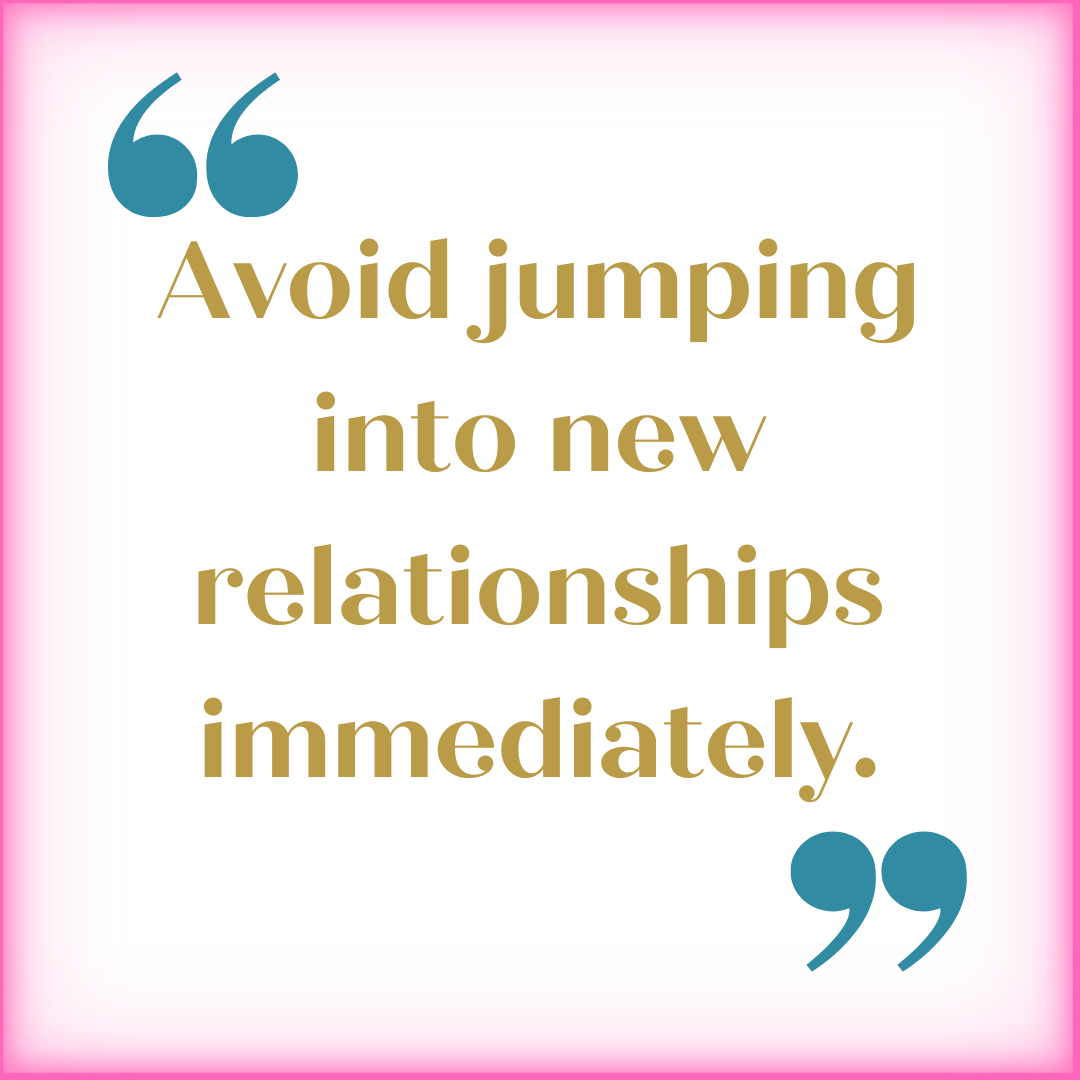 Walking away from a relationship with an emotionally unavailable partner and moving toward a healthier relationship requires thoughtful consideration and self-empowerment. Here are some steps to consider:
Begin with self-reflection to assess your needs, values, and emotional well-being. Consider whether the current relationship aligns with your long-term happiness and growth. Recognize patterns of emotional unavailability or harmful behavior in the relationship. Understanding these patterns can help you realize that the issues are not solely your responsibility. Seek support from friends, family, or a therapist. Talking to someone impartial can provide valuable insights and emotional support during this process. Set clear boundaries and communicate them with your partner. Be firm about what you need from the relationship and what you won't tolerate. Stick to your boundaries, even if it means walking away. Prioritize self-care and engage in activities that bring you joy and reduce stress. Investing in yourself will strengthen your ability to navigate through challenging situations. If you decide to end the relationship, have an honest and respectful conversation with your partner. Explain your reasons calmly and assertively, focusing on your feelings and needs rather than blaming them. Allow yourself to grieve the loss and process your emotions in a healthy way. Ending any relationship can be emotionally difficult. Take the opportunity to learn from the relationship and understand what you want and need in future partnerships. Stay positive and patient during the healing process. Finding a healthy relationship takes time, and it's essential to be patient with yourself. Avoid jumping into new relationships immediately. Give yourself time to heal and grow before entering into a new partnership. Rushing into a new relationship may lead to repeating unhealthy patterns. Remember, it's crucial to prioritize your emotional well-being and not settle for a relationship that is consistently harmful or unfulfilling. You deserve to be in a healthy and supportive partnership where emotional intimacy and mutual respect are valued. Taking the time to work on yourself and build a strong foundation will increase the likelihood of finding a healthier and more fulfilling relationship in the future. The Red Ferrari Author of Get the Soulmate and Dump the Rest Love In The 12th Dimension How To Manifest Your Soulmate Rediscovering Abundance When a spiritual connection between two people starts to become physical, it can bring about a surge of mental and emotional challenges for several reasons:
It's essential to recognize that navigating the shift from a spiritual connection to a physical one can be complex and may require open and honest communication between both parties. It's natural to experience challenges during this transition, but with patience, understanding, and mutual support, it can lead to a deeper and more fulfilling connection for both individuals involved. Challenges Resolving the challenges that arise when transitioning from a spiritual connection to a physical one requires both individuals to be committed to understanding each other's needs, communicating openly and honestly, and actively working towards alignment. Here are some steps that can help in navigating this process while preserving the connection:
Remember that alignment in a relationship is an ongoing journey, and it requires continuous effort and understanding from both partners. By approaching the transition with love, openness, and a willingness to grow together, you can preserve the profound connection while exploring new dimensions of your relationship. Ease Into It: Spending more time together physically and easing mental and emotional challenges slowly requires a thoughtful and gradual approach. Here are some suggestions to help achieve this:
Remember that building a strong and lasting connection takes time and effort. By approaching the relationship with patience, understanding, and a genuine desire to support each other's well-being, you can gradually ease the mental and emotional challenges while enjoying each other's company in a fulfilling and meaningful way. By embracing these principles, both individuals can cultivate a deeper connection while addressing mental and emotional challenges that may arise. Each relationship is unique, so it's essential to tailor these suggestions to your specific circumstances and remember that building a lasting connection is a beautiful and rewarding journey. But We Only Chat Online Before, How Did This Happen? Yes, building a deeper connection with someone can indeed happen through chatting over a long period of time. In today's digital age, many relationships, including romantic ones, friendships, and even business partnerships, start and flourish through online communication channels such as messaging apps, social media, or online forums. Chatting over an extended period allows individuals to:
While chatting over a long period can help build a strong emotional connection, it's important to balance online communication with real-life interactions when possible. Face-to-face meetings, phone calls, or video calls can deepen the connection further, as they allow for more immediate and intimate exchanges.
However, it's essential to remain mindful of the challenges that may arise in digital relationships, such as misinterpretation of messages, the potential for deception, or the need to verify the identity and authenticity of the other person. Always prioritize safety and trust-building while engaging in online communication. Ultimately, the strength and depth of the connection depend on the quality of the communication, the genuine interest and effort invested by both individuals, and the shared values and goals they discover over time. In today's digital age, the landscape of relationships has evolved, offering new avenues for meaningful connections. While the traditional methods of meeting in person remain valuable, the power of chatting over a long period of time has brought about a transformative shift in how people build emotional bonds. Let's explore how a connection could evolve from digital chatting to a spiritual and physical connection that leads to mental and emotional challenges: From Chatting to Spiritual Connection:
From Spiritual to Physical Connection:
Mental and Emotional Challenges:
The journey from digital chatting to a spiritual and physical connection can be both beautiful and complex. While the spiritual bond might have served as a strong foundation for the relationship, the introduction of physical intimacy brought new challenges and emotions to the forefront. To navigate these challenges, open and honest communication, empathy, and patience are essential. By acknowledging the emotional complexities and working together to address them, the connection can continue to evolve and grow stronger, deepening the spiritual and physical bond between the two individuals. But If It Blows Up: When a relationship faces challenges and everything seems to have blown up out of proportion, it can be disheartening and overwhelming. However, with genuine effort and a willingness to work on the issues, it is possible for the relationship to find a path back to safety and stability. Here's how:
Remember that healing and restoring safety in a relationship require effort and commitment from both individuals. Be willing to learn from mistakes, grow together, and celebrate small steps toward rebuilding a sense of safety and security. With dedication, understanding, and love, it is possible to find your way back to a safe and fulfilling connection. Can You Make It Work Afterwards: Renewing a connection and avoiding mental conflicts when things go sideways in a relationship requires both individuals to be proactive and committed to resolving the issues. Here are some steps to help renew the connection and minimize mental conflicts:
Remember that every relationship faces challenges, and it is normal to experience conflicts at times. The key to renewal is in how both individuals respond to these challenges and actively work together to rebuild the connection. By communicating openly, showing empathy, and prioritizing emotional safety, you can overcome conflicts and find a renewed sense of closeness and understanding. The Red Ferrari Author of Get the Soulmate and Dump the Rest Love In The 12th Dimension How To Manifest Your Soulmate Rediscovering Abundance Exploring the Science of Mirror Neurons and the Spiritual Concept of Twin Flame Connections7/24/2023 Mirror neurons play a crucial role in empathy, which is the ability to understand and share the emotions and experiences of others. These specialized brain cells were first discovered in the 1990s, and since then, they have been a subject of significant research in the field of neuroscience and psychology.
Here's how mirror neurons are closely linked to empathy: 1. Mirroring Emotions: Mirror neurons enable us to "mirror" the emotions and actions of others. When we see someone experiencing a specific emotion, such as happiness, sadness, fear, or pain, our mirror neurons fire as if we were experiencing that emotion ourselves. This mirroring mechanism helps us understand what others are feeling, as we can mentally simulate their emotional experiences within ourselves. 2. Emotional Contagion: Mirror neurons contribute to a phenomenon known as emotional contagion. When we observe someone expressing strong emotions, such as laughter or tears, our mirror neurons activate, and we may unconsciously start to mimic those emotional expressions. This process can create an emotional resonance, leading us to feel a similar emotional state as the person we are observing. 3. Empathic Understanding: Mirror neurons facilitate empathic understanding by allowing us to mentally simulate the experiences of others. This ability helps us "put ourselves in someone else's shoes" and gain insights into their emotional state and perspective. Empathic understanding is essential for building emotional connections, supporting others during challenging times, and fostering more compassionate and caring relationships. 4. Social Learning: Beyond emotions, mirror neurons also play a role in social learning. By mirroring the actions of others, we can observe and learn new behaviors, skills, and cultural norms. This aspect of mirror neurons contributes to how we learn through imitation and emulation, especially during early childhood development. 5. Empathy and Prosocial Behavior: Mirror neurons are believed to be a neural basis for prosocial behavior and altruism. When we empathize with others, we are more likely to act compassionately and help those in need. Empathy encourages acts of kindness, cooperation, and social bonding, fostering a sense of interconnectedness within communities. 6. Neural Basis of Empathy Disorders: Dysfunction or underactivity of mirror neurons has been hypothesized to play a role in certain empathy disorders, such as autism spectrum disorder. Impaired mirror neuron function may contribute to challenges in understanding and responding to the emotions and social cues of others. Mirror neurons provide a neurobiological foundation for our capacity to experience empathy. The ability to understand and share the emotions of others is fundamental to human social interaction and is vital for building meaningful relationships and fostering a compassionate and supportive society. As our understanding of mirror neurons and empathy continues to evolve, so does our appreciation for the intricate ways our brains enable us to connect with and care for one another. Mirror neurons and twin flame connections are two distinct concepts, both fascinating in their own right. Let's delve into each of them separately: Mirror Neurons: Mirror neurons are specialized brain cells that play a significant role in social cognition and empathy. They were first discovered in the 1990s by Italian neuroscientists studying macaque monkeys. These neurons fire not only when an individual performs a specific action but also when they observe someone else performing the same action. In other words, mirror neurons enable us to "mirror" the actions, emotions, and intentions of others as if we were experiencing them ourselves. The discovery of mirror neurons has had a profound impact on our understanding of human social behavior and the ability to empathize with others. It is believed that mirror neurons facilitate our capacity to understand and connect with other people's emotions, intentions, and even pain, leading to a sense of shared experience. Twin Flame Connections: Twin flame connections are a spiritual concept that goes beyond the realm of neuroscience and psychology. According to twin flame beliefs, a twin flame is essentially the other half of your soul – the mirror image of your true self. It is believed that twin flames are two souls that were created from the same source but split into two separate bodies, and they are destined to find each other in their earthly journey. Twin flame relationships are said to be incredibly intense, and meeting your twin flame is often described as a deeply transformative and spiritual experience. The connection is believed to be one of profound love, understanding, and recognition on a soul level. Twin flames are said to mirror each other's strengths, weaknesses, and experiences, leading to significant personal growth and spiritual evolution. It is essential to note that the concept of twin flames is rooted in spirituality and metaphysics, and there is no scientific evidence to support the existence of twin flames or the idea that souls split into two halves. As with any spiritual belief, interpretations and experiences can vary widely among individuals. Connecting Mirror Neurons and Twin Flame Connections: The connection between mirror neurons and twin flame connections is speculative and not based on scientific research. Some individuals in the spiritual community suggest that the heightened activation of mirror neurons could explain the intense empathic connection experienced between twin flames. They propose that mirror neurons could be responsible for the strong sense of recognition and shared emotions that twin flames report upon meeting each other. While mirror neurons do play a significant role in empathy and understanding the emotions of others, there is no scientific evidence to suggest a direct link between mirror neurons and the metaphysical concept of twin flames. Mirror neurons are a fascinating neuroscientific discovery that aids in understanding empathy and social behavior, while twin flame connections are a spiritual belief centered around the idea of finding one's other half. While both concepts are intriguing, they belong to different realms of study and interpretation. As always, individual beliefs and experiences vary, and it is essential to approach spiritual concepts with an open mind and a critical perspective. In the context of the spiritual concept of twin flames, the idea that twin flames "mirror" each other goes beyond the scientific understanding of mirror neurons and empathy. Twin flame connections are often believed to involve profound and intense spiritual reflections between two individuals who are considered to be spiritually destined for each other. While this is not scientifically proven, proponents of twin flame beliefs suggest several reasons why twin flames may mirror each other: 1. Soul Connection: Twin flames are believed to be two halves of the same soul that were separated and incarnated into different bodies. As a result, they share a deep soul connection, leading to mirroring of emotions, experiences, and spiritual growth. 2. Spiritual Growth: The mirroring aspect of twin flames is thought to catalyze significant personal and spiritual growth. The intensity of the connection can bring forward unresolved issues, emotional wounds, and past traumas that both individuals need to confront and heal. Twin flames often serve as mirrors for each other's inner selves, pushing each other to evolve and transform. 3. Complementary Qualities: Twin flames are said to possess complementary qualities and energies. They mirror each other's strengths and weaknesses, helping each other find balance and wholeness. 4. Unconditional Love and Acceptance: Twin flames are believed to love and accept each other unconditionally, seeing each other without judgment. This unconditional love can help each individual fully accept and integrate both their positive and negative aspects. 5. Shared Journey of Awakening: Twin flames are thought to embark on a shared journey of spiritual awakening and self-discovery. The mirroring effect aids in guiding them through their paths of enlightenment and self-realization. 6. Divine Purpose: Twin flame connections are often associated with a higher divine purpose or mission. It is believed that twin flames come together to fulfill a greater spiritual mission or contribute to the collective consciousness. It is essential to emphasize that the concept of twin flames is rooted in spirituality and metaphysics, and interpretations and beliefs about twin flame connections can vary widely. As with any spiritual belief, individual experiences and perspectives may differ, and there is no scientific evidence supporting the existence of twin flames as described in spiritual teachings. Will Mirror Neurons Impact Losing Ones Self in Twin Flame Dynamic People who resonate with the idea of twin flames often find comfort and inspiration in the concept, but it's important to approach these beliefs with an open mind and critical thinking, recognizing that they are not based on scientific evidence but rather on personal and spiritual interpretations. While mirror neurons play a role in empathy and understanding the emotions of others, they do not directly explain the phenomenon of "losing oneself" or "abandoning oneself" in another person. The concept of losing oneself in another typically refers to a state where an individual becomes so emotionally entwined or dependent on their partner that they neglect their own needs, values, and identity. The process of losing oneself in another is influenced by various psychological, emotional, and relational factors, including: 1. Attachment Patterns: Individuals with certain attachment styles, such as anxious attachment, may be more prone to losing themselves in a relationship. They might fear abandonment or have a strong desire for emotional closeness, leading them to prioritize their partner's needs over their own. 2. Low Self-Esteem: People with low self-esteem may seek validation and self-worth through their relationships. They may prioritize their partner's opinions and desires, neglecting their own in the process. 3. Codependency: Codependent relationships often involve one person excessively relying on their partner for emotional support, validation, and a sense of identity. This behavior can lead to losing oneself in the relationship. 4. Lack of Boundaries: When individuals lack clear boundaries, they may have difficulty maintaining a sense of self and may inadvertently merge their identity with their partner's. 5. Idealization of the Partner: Idealizing the partner can lead to disregarding one's own needs and desires in an attempt to please and keep the partner happy. 6. Fear of Autonomy: Some individuals may fear autonomy and independence, leading them to seek merging with their partner to avoid feelings of loneliness or inadequacy. It's important to recognize that healthy relationships are built on mutual respect, open communication, and the ability to maintain a sense of individuality while still being emotionally connected. While empathy and emotional resonance (linked to mirror neurons) can foster understanding and connection, it's crucial for individuals to maintain a healthy balance between their own needs and the needs of the relationship. Developing self-awareness, setting clear boundaries, and fostering a sense of self-worth can help individuals avoid losing themselves in a relationship. Additionally, seeking support from a therapist or counselor can be beneficial for individuals who find themselves struggling with codependency or identity-related issues in their relationships. Mirror Neurons and Subconscious Blocks There is no direct scientific evidence suggesting that mirror neurons directly assist with subconscious blocks and self-limiting beliefs. Mirror neurons primarily play a role in social cognition, empathy, and understanding the emotions and actions of others. Subconscious blocks and self-limiting beliefs, on the other hand, are complex psychological constructs related to the workings of the human mind. They are thought to be deeply ingrained patterns of thought and behavior that may hinder personal growth, self-confidence, and well-being. These beliefs often develop based on past experiences, upbringing, and social conditioning. The relationship between mirror neurons and subconscious blocks or self-limiting beliefs is not well-established in scientific research. However, it is possible that increased empathy and emotional understanding, facilitated in part by mirror neurons, could contribute to greater self-awareness. Being able to understand the emotions and experiences of others might help individuals recognize patterns within themselves, including subconscious blocks and self-limiting beliefs. Indirectly, self-awareness and understanding the emotions of others (through the mirror neuron system) can be valuable tools in addressing subconscious blocks and self-limiting beliefs. Recognizing these patterns can open the door to personal reflection, therapeutic exploration, and potential steps towards personal growth and positive change. It is essential to note that the understanding of mirror neurons is an ongoing area of research, and the brain's complexity makes it challenging to pinpoint precise cause-and-effect relationships between neural processes and psychological phenomena. If you are interested in addressing subconscious blocks or self-limiting beliefs, seeking the support of a qualified mental health professional or therapist can be beneficial. They can help guide you through the process of self-discovery and provide appropriate techniques and interventions to address these challenges effectively. The Red Ferrari Author of Get the Soulmate and Dump the Rest Love In The 12th Dimension How To Manifest Your Soulmate Rediscovering Abundance Dating can be an exhilarating journey of connection and exploration. However, for some individuals, the fear of commitment can cast a shadow over their romantic pursuits. Whether you find yourself grappling with commitment issues or your partner is struggling with them, understanding and managing these challenges are essential for fostering healthy and fulfilling relationships. In this article, we will delve into the world of commitment issues and provide practical strategies to navigate them successfully in the dating realm. Cultivate Self-Awareness:
The first step in managing commitment issues is developing self-awareness. Take the time to reflect on your feelings and emotions surrounding commitment. Identify any past experiences or traumas that might be influencing your current fears. By understanding yourself better, you can communicate your needs more effectively and foster a deeper level of trust with your partner. Address Past Baggage: Unresolved emotional baggage from previous relationships can hinder your ability to fully commit to a new partner. Consider seeking professional help through therapy or counseling to work through these issues. By addressing your past, you can liberate yourself from emotional burdens and pave the way for healthier connections in the future. Prioritize Open Communication: Honest and open communication is the cornerstone of any successful relationship, especially when dealing with commitment issues. Encourage candid conversations with your partner about your feelings and concerns. Create a safe and non-judgmental space where both of you can express your emotions freely. Active listening is vital during these exchanges to foster mutual understanding. Set Realistic Expectations: Commitment doesn't have to be an all-or-nothing concept. Set realistic expectations for your relationship and the level of commitment you're comfortable with at the present moment. Acknowledge that it's okay to take small steps towards a more committed future together. This approach helps alleviate pressure and allows the relationship to grow organically. Take Small Steps Together: Building trust and emotional intimacy in a relationship requires time and patience. Take small steps together, such as planning short-term future activities, sharing vulnerabilities, or meeting each other's close friends and family. These gradual progressions allow both partners to feel more secure as the relationship deepens. Practice Patience and Understanding: Dealing with commitment issues can be a complex process. Whether you are navigating your own fears or supporting your partner, patience is key. Avoid pressuring or rushing your partner into commitment, as it may cause them to withdraw further. Instead, cultivate a supportive environment where growth can flourish at a comfortable pace. Focus on the Present: Letting go of worries about the future is vital in managing commitment issues. Embrace the present moment and enjoy the time you spend together. By focusing on building positive experiences in the now, you create a foundation of trust and emotional connection that can lead to stronger commitments in the future. Embrace Personal Growth: Encourage each other's personal growth and individual pursuits. Feeling secure as individuals allows for a healthier dynamic within the relationship. Embracing personal development strengthens the connection between partners and promotes a more profound sense of mutual support. Commitment issues, particularly in the dating world, can be influenced by various factors, and attachment theory provides valuable insights into understanding and managing these issues. Attachment theory, developed by John Bowlby and later expanded by Mary Ainsworth, explores how early attachment experiences with caregivers shape our patterns of relating to others in adulthood. There are four primary attachment styles:
Commitment issues are common challenges in the dating world, but they can be managed and overcome with dedication and understanding. By fostering open communication, self-awareness, and patience, individuals can navigate these obstacles and build stronger, more committed relationships. Remember that each person's journey is unique, and progress may take time. With compassion and resilience, both partners can work together to overcome commitment issues and create lasting bonds based on trust and love. The Red Ferrari Author of Get the Soulmate and Dump the Rest Love In The 12th Dimension How To Manifest Your Soulmate Rediscovering Abundance Today folks, we are going to talk about a manipulative tactic called "gaslighting" that can harm your mental well-being and relationships. Gaslighting is a form of psychological manipulation where one person tries to make another doubt their own reality, memory, or perceptions. It's crucial to be aware of this behavior so you can protect yourself and your emotional health.
Let's dive into the signs of gaslighting:
Gaslighting is a severe form of emotional abuse that can have lasting effects on your mental health. If you notice these signs in any of your relationships, it's essential to take action:
Remember, you deserve to be treated with respect, kindness, and understanding. Surround yourself with people who uplift and support you. Gaslighting is not your fault, and you have the power to break free from its toxic grip. Stay strong and take care of yourselves! People gaslight for various reasons, and it's important to understand that it often stems from their own insecurities, desire for control, or manipulative tendencies. Some common reasons why people gaslight others include:
Now, let's talk about how to avoid being a victim of gaslighting: Being a victim of gaslighting can happen more easily than expected due to various factors. Gaslighters use gradual manipulation, target emotionally vulnerable individuals, and exploit trusted relationships. Victims may lack awareness of gaslighting, become isolated, and fear confrontation or losing the relationship. The gaslighter's charm and charisma can cloud the victim's judgment, and over time, the manipulation may be normalized. Remember, falling victim to gaslighting is not a sign of weakness, and recognizing the signs can help individuals seek support and break free from the cycle of manipulation.
Being a victim of gaslighting doesn't define you. By recognizing the signs and taking proactive steps to protect yourself, you can regain control of your life and build healthier, more authentic relationships. Trust yourself and your judgment, and prioritize your emotional well-being. The Red Ferrari Author of Get the Soulmate and Dump the Rest Love In The 12th Dimension How To Manifest Your Soulmate Rediscovering Abundance The Role of Mirror Neurons in Attachment: Understanding and Nurturing Healthy Relationships7/23/2023 In the past, I've noticed a pattern in my relationships where I would oscillate between seeking closeness and fearing intimacy. It led to a series of breakups and makeups, leaving me feeling emotionally drained and unsure of how to navigate my emotions. But you know what? I decided it was time to take charge of my life and make a change for the better. Here are some steps that have been helping me move towards healthier relationships and personal healing: 🔍 Self-Reflection and Awareness: I took time to look within myself and understand my attachment style and past relationship patterns. Being aware of these patterns has been eye-opening and empowering. 🧠 Seeking Professional Help: I reached out to a therapist who specializes in attachment issues and relationships. Talking to a professional has provided me with valuable insights and guidance in handling my conflicting emotions. 💕 Practicing Self-Compassion: Healing isn't always a smooth journey, and that's okay. I've learned to be kinder to myself, acknowledging my progress, and giving myself the space to grow. 🚧 Setting Boundaries: Boundaries are crucial in any relationship. I've learned to recognize my needs and communicate them clearly, and I respect my partner's boundaries as well. 🧘 Emotional Regulation Skills: To manage intense emotions, I've adopted mindfulness practices like meditation and deep breathing. It's incredible how grounding yourself can help you make more thoughtful decisions. ⏸️ Taking Breaks when Needed: Whenever I felt overwhelmed or uncertain, I allowed myself to take a step back from the relationship. It gave me a chance to gain perspective and understand my feelings better. 🤝 Building Trust Gradually: Trust is a big challenge for someone with a fearful avoidant style. I've been actively working on building trust with my partner through open communication and consistent actions. 📚 Exploring Attachment Theory: Reading about attachment theory has given me valuable insights into my own behaviors and emotions in relationships. 🌱 Engaging in Activities for Emotional Growth: Pursuing activities like journaling, creative expression, and participating in support groups has helped me grow emotionally and find a supportive community. 🕰️ Being Patient with Myself: Healing and personal growth take time, and that's okay. I remind myself to be patient with myself and the process. Mirror neurons, also known as mirror cells, are a type of brain cell that play a significant role in understanding the actions, intentions, and emotions of others. They were first discovered in the 1990s in the brains of macaque monkeys and have since been found in humans as well. Mirror neurons are located in the premotor cortex and the inferior parietal cortex of the brain, areas involved in planning and executing actions. The key characteristic of mirror neurons is their ability to "mirror" the actions and emotions of others as if the observer themselves were performing those actions or experiencing those emotions. When a person observes someone else performing an action, the mirror neurons in their brain fire, as if they were performing the same action. This phenomenon is thought to be crucial for social learning, empathy, and understanding the intentions and emotions of others. The concept of mirror neurons is closely related to attachment, particularly in the context of early development and caregiver-child relationships. Attachment theory, developed by John Bowlby and further extended by Mary Ainsworth, suggests that the quality of the bond between an infant and their primary caregiver (usually the mother) has a profound impact on the child's emotional and social development. During early infancy, mirror neurons play a crucial role in the bonding process. When a caregiver responds to an infant's needs, such as by smiling, talking, or cuddling, the infant's mirror neurons are activated, allowing them to mimic the caregiver's facial expressions and emotions. This back-and-forth emotional exchange helps create a strong emotional bond between the infant and the caregiver. Secure attachment develops when a caregiver consistently and sensitively responds to the child's needs, creating a safe and nurturing environment. In such cases, the child's mirror neurons help them understand and regulate their emotions better, as they have experienced emotional attunement from their caregiver. On the other hand, when a caregiver is inconsistent or unresponsive to an infant's needs, it can lead to insecure attachment styles. Anxious attachment can result from caregivers who are unpredictable in their responses, leading the child to be uncertain about the caregiver's availability and responsiveness. Avoidant attachment can develop when caregivers are consistently unresponsive or dismissive of the child's emotional cues, causing the child to suppress their emotions. Attachment patterns established in early childhood can have long-lasting effects on an individual's relationships and emotional regulation throughout life. People with secure attachment tend to have healthier and more satisfying relationships, while those with insecure attachment may struggle with intimacy and emotional connection. Mirror neurons are brain cells that play a significant role in social cognition, empathy, and understanding the emotions of others. They are closely linked to attachment processes during early development, helping to create emotional bonds between caregivers and infants. These early attachment experiences can shape an individual's emotional and relational development throughout their life. To manage attachment patterns and develop healthier, more fulfilling relationships, it's essential to increase self-awareness, work on emotional regulation, and practice new relationship behaviors. Here are some strategies that can help:
Changing attachment patterns and developing healthier relationships takes time and effort. Be patient with yourself and celebrate small steps toward growth and improvement. If you find it challenging to manage attachment patterns on your own, seeking professional support can be highly beneficial. A qualified therapist can provide guidance, validation, and practical tools to help you build healthier and more satisfying relationships. Recognizing signs of attachment patterns in your current relationships involves understanding how mirror neurons play a role in shaping emotional dynamics. Be attentive to your emotional reactions and behaviors, as mirror neurons contribute to the way you perceive and respond to your partner. Here are some indicators that may suggest you are experiencing attachment-related challenges:
Remember that attachment styles are not fixed, and understanding how mirror neurons influence your emotional responses can aid in fostering healthier relationships. Seeking support from a therapist or counselor can provide insights into these attachment challenges and help you develop healthier relational behaviors. Developing self-awareness and engaging in open communication with your partner can also contribute to personal growth and relationship improvement. We are all on our unique journeys, and it's okay to face setbacks. Embrace the progress you make and keep moving forward towards creating healthier, more fulfilling relationships. Let's support each other in this beautiful path of growth and healing! 💪🌸 Vicki AKA The Red Ferrari Author of Get the Soulmate and Dump the Rest Love In The 12th Dimension How To Manifest Your Soulmate Rediscovering Abundance Introduction: In the tapestry of life, we encounter numerous trials and tribulations that leave us with emotional wounds in need of tender care. It is not merely what we believe, but rather the profound reasons behind our beliefs that shape our experiences and perspectives. Just like the loving touch of a mother's kiss and a comforting bandaid on a scraped knee, we often use diverse methods to create a safe place for healing, both physical and emotional. In this blog, we embark on a journey to explore the extraordinary ways individuals pave the path to personal restoration and growth. From seeking emotional support and self-reflection to embracing mindfulness and the power of forgiveness, each step we take on this healing odyssey brings us closer to finding solace and strength within ourselves. Join us as we unveil the secrets of nurturing emotional well-being and learn how to create a sanctuary for healing amidst life's trials and tribulations. The way we believe and the reasons behind our beliefs play a significant role in shaping our experiences and perspectives. The example you provided about a mother's kiss and a band aid illustrates the concept of creating a safe place for healing, even though the physical act of kissing the wound might not directly cure it.
In life, we encounter various challenges, emotional wounds, and difficulties that require healing, both physical and emotional. While physical healing often involves medical interventions, emotional healing is more complex and can be influenced by various factors, including our beliefs, support systems, coping mechanisms, and emotional resilience. Different people may have diverse methods for creating a safe place for healing based on their unique experiences, cultural backgrounds, and belief systems. Some common methods include:
Healing is a multi-faceted process that requires a combination of self-awareness, support, coping mechanisms, and personal growth. It's about finding what works best for each individual and recognizing that the journey may involve ups and downs. By incorporating various methods like emotional support, self-reflection, therapy, mindfulness, artistic expression, spirituality, exercise, forgiveness, and healthy boundaries, individuals can create a safe and nurturing space for healing and growth. Conclusion: In the quest for healing, we have unraveled a tapestry of transformative methods that can guide us towards being fully present in ourselves and our existence. By understanding the significance of our beliefs and the reasons behind them, we gain profound insights into our emotions and experiences. Embracing emotional support from loved ones and seeking professional guidance through therapy provides a safe haven for our feelings to be acknowledged and validated. Self-reflection and mindfulness become invaluable tools in cultivating self-awareness and living in the present moment. As we engage in creative expressions and physical activities, we tap into the depths of our souls, allowing emotions to flow freely, unearthing hidden strengths and untapped potentials. Through the power of forgiveness, we liberate ourselves from the shackles of past hurts, granting us the freedom to fully embrace the present without being weighed down by resentment. Setting healthy boundaries serves as a protective armor, safeguarding our well-being, and empowering us to navigate life's challenges with resilience. As we weave these methods together, we create a sanctuary within ourselves for healing and growth. In this sacred space, we become intimately acquainted with our essence, learning to love ourselves unconditionally and accept every facet of our existence. By acknowledging and embracing our vulnerabilities, we discover newfound strengths and a profound sense of authenticity. Ultimately, the journey towards healing and being fully present in our existence is a continuous process, shaped by our unique experiences and choices. By cultivating a compassionate and nurturing relationship with ourselves, we embark on a remarkable expedition towards self-discovery and inner harmony. As we traverse this path, we learn to savor every moment, cherishing the beauty of life's tapestry in all its intricacies and imperfections. So let us be gentle with ourselves, for in embracing healing, we unlock the key to a fulfilled and purposeful existence. The Red Ferrari Author of Get the Soulmate and Dump the Rest Love In The 12th Dimension How To Manifest Your Soulmate Rediscovering Abundance In the pursuit of a meaningful and fulfilling life, we often find ourselves caught between two powerful forces: obligation and desire. Both play significant roles in shaping our decisions and actions, but they can lead us down different paths. Understanding the delicate interplay between these two forces is crucial for achieving a balanced and content existence.
Defining Obligation and Desire: Obligation refers to the sense of duty or responsibility we feel towards others or ourselves. It is often driven by external factors, such as societal norms, family expectations, or contractual agreements. We experience obligations in various aspects of life, including our professions, relationships, and personal commitments. Fulfilling obligations can provide stability and a sense of purpose, but it can also lead to a feeling of being trapped or restricted. On the other hand, desire represents the inner passion, wishes, and dreams that propel us towards personal growth and happiness. It is the driving force behind creativity, ambition, and our deepest aspirations. Following our desires can lead to a life full of excitement, self-discovery, and fulfillment. However, excessive focus on desires without considering responsibilities can lead to impractical choices and a lack of stability. The Conflict: Often, obligations and desires appear to be at odds with each other. We may find ourselves torn between fulfilling our responsibilities towards our families or careers and pursuing our personal passions. For instance, someone might feel obliged to continue a family business, even though their heart desires to explore a different career path. In some cases, societal norms or cultural expectations can amplify this conflict. People may feel obligated to follow a certain life trajectory, even if it doesn't align with their true desires. This internal struggle can cause stress, anxiety, and a sense of being unfulfilled. Striking a Balance: Achieving a harmonious balance between obligation and desire is essential for living a rewarding life. Here are some strategies to help navigate this delicate equilibrium:
Obligation and desire are two powerful forces that shape our lives. While obligations provide stability and a sense of responsibility, desires ignite our passions and bring fulfillment. Striking a balance between these two forces can be challenging, but it is crucial for a content and meaningful existence. Remember, life is a journey, and it's essential to acknowledge and respect both your obligations and desires. Embrace self-reflection, effective communication, prioritization, and adaptability to harmonize these forces and create a life that fulfills both your responsibilities and your deepest wishes. By doing so, you'll find the key to living a truly enriching and rewarding life. The Influence of Obligation in Romantic Relationships: Romantic relationships are deeply affected by the interplay of obligation and desire. At the beginning of a relationship, the initial spark of desire often fuels excitement and passion. However, as the relationship progresses, obligations can start to emerge. Couples may feel obligated to maintain the relationship due to societal expectations, a shared history, or the fear of hurting each other. In some cases, individuals might feel obliged to stay in a relationship that is no longer fulfilling, simply because they feel responsible for their partner's happiness or afraid of being alone. This sense of obligation can lead to a stagnant and unfulfilling relationship, where personal desires and growth are stifled. On the other hand, embracing desire in a romantic relationship is crucial for its longevity and depth. Nurturing the passion and connection that initially brought the couple together can strengthen the bond between partners and lead to a more satisfying relationship. Encouraging each other's desires and dreams can bring excitement and joy to the partnership, fostering a sense of mutual support and growth. Finding a Balance in Romantic Relationships: To cultivate a healthy and fulfilling romantic relationship, it's essential to strike a balance between obligation and desire:
Addressing Feeling Obligated: Feeling obligated in a romantic relationship can be challenging, but it's essential to address this sentiment honestly:
Conclusion: In romantic relationships, obligation and desire can significantly influence the dynamics and overall satisfaction. By fostering open communication, respecting individuality, and embracing change, couples can find a balance that allows for both obligations and desires to coexist harmoniously. Addressing feelings of obligation honestly and seeking personal growth can lead to a more fulfilling and contented romantic partnership. Remember that a strong relationship should nurture each other's desires, enabling both partners to flourish in their pursuit of a meaningful life together. The Red Ferrari Author of Get the Soulmate and Dump the Rest Love In The 12th Dimension How To Manifest Your Soulmate Rediscovering Abundance Hey everyone, today let's talk about an important topic that many of us might have experienced at some point in our lives—the feeling of being taken for granted. It's crucial to be aware of these signs so that we can recognize when our efforts and contributions are not being valued as they should be.
Remember, recognizing these signs is the first step towards reclaiming your worth and setting healthier boundaries. It's crucial to surround yourself with people who genuinely appreciate and reciprocate your efforts and love. Don't be afraid to communicate your feelings and stand up for yourself. You deserve to be valued and cherished, and never forget that you hold the power to create a life filled with love and respect. ❤️🌟 Healing from the tendency to tolerate unhealthy relationships where you are taken for granted is a transformative journey that requires self-awareness, self-compassion, and a commitment to your well-being. Here are some additional insights to help you navigate this healing process:
Remember that healing is a process, and it's okay to take things one step at a time. Be patient with yourself, and celebrate each milestone as you grow and cultivate healthier, more fulfilling relationships. You are worthy of love, respect, and happiness, and by healing from past wounds, you can create a brighter and more positive future for yourself. 🌻💕 The Red Ferrari Author of Get the Soulmate and Dump the Rest Love In The 12th Dimension How To Manifest Your Soulmate Rediscovering Abundance 🕰️ Wasting Precious Time on Unrequited Love: Learning to Let Go and Grow 🕰️
Hey friends, Today I want to share a personal experience that I believe many of us have faced at some point in our lives—the agony of investing precious time and energy into someone who doesn't reciprocate our feelings. It's a tough pill to swallow, but it's crucial to acknowledge and address it. Unrequited love can be a soul-crushing journey. We find ourselves daydreaming about a future with this person, pouring our heart and soul into a relationship that exists only in our minds. Despite all our efforts, the connection remains one-sided, leaving us feeling lost and heartbroken. At times, it's not just about unrequited love, but also about unrequited friendships or any relationship where we invest heavily but get little in return. It can be with a friend, family member, or romantic interest. Regardless of the nature of the relationship, it can be emotionally draining. While it's natural to feel hurt and disappointed, the key lies in recognizing when it's time to let go. Holding on to something that isn't meant to be can be emotionally and mentally taxing, leaving us stuck in a loop of unfulfilled desires. But take heart! The awareness of wasted time is an opportunity for growth and self-reflection. It's a chance to reevaluate our priorities, understand our worth, and reclaim our time for things and people that truly bring joy and fulfillment to our lives. Letting go doesn't mean giving up on love or closing ourselves off from others. It means redirecting our energy towards nurturing relationships that uplift and support us. It means cherishing ourselves enough to walk away from situations that do not serve our well-being. Consciousness of our actions and emotions is essential. Acknowledging that we've invested time in a situation that isn't reciprocated can be painful, but it's also liberating. It allows us to learn from our experiences, make better choices, and create healthier boundaries in the future. So, if you find yourself entangled in a situation where your time and affection aren't valued, remember that it's okay to walk away. Your worth is not determined by someone else's validation or reciprocation. Embrace the lesson, cherish yourself, and open your heart to the endless possibilities that life has in store. In the end, we may not be able to control how others feel or act, but we can control how we respond. Let's choose to grow, to love ourselves, and to invest our time wisely in the relationships that nourish our souls. It's time to break free from the shackles of unrequited attachments and create a life filled with genuine love and happiness. 🌟💖 The Red Ferrari Author of Get the Soulmate and Dump the Rest Love In The 12th Dimension How To Manifest Your Soulmate Rediscovering Abundance Hey there, beautiful souls! Today, I want to share a deeply transformative journey that has brought me to a place of empowerment, self-love, and authenticity. It's a story of breaking free from the chains of people-pleasing, reclaiming my essence, and embracing my true self without being fragmented by others' demands, pain, or lack of self-control. For far too long, I found myself trapped in a cycle of self-sacrifice, believing that my worth was determined by how much I could give to others. I would bend over backward, denying my own needs and desires, just to please those around me. But little did I realize that by doing so, I was losing my true self in the process. The turning point came when I began to recognize that my self-worth shouldn't be dependent on others' approval or validation. I deserved to be loved and accepted for who I am, not for what I could do for someone else. It was time to take back control of my life, set boundaries, and honor my own needs as much as I respected others'.
It wasn't an easy path, as breaking free from ingrained patterns can be challenging. But I was determined to no longer allow anyone else's entitlement, pain, or lack of self-control to dictate my happiness and well-being. I realized that my journey to wholeness required me to stand strong in my truth and stay committed to my growth. As I began to prioritize my well-being, I discovered that my relationships started to transform. Some people couldn't handle my newfound assertiveness, but that was okay because their departure created space for healthier connections. Surrounding myself with individuals who respected and valued me for who I am allowed me to thrive authentically. Throughout this journey, I learned that my worth was not defined by how much I could carry for others, but by how much I loved and accepted myself. My soul was no longer fragmented by the weight of others' expectations, nor did I lose myself in the process of trying to "fix" someone else's pain. Now, I cherish my essence and embrace it fully. I no longer hide behind masks or suppress my voice to accommodate others. My happiness and self-love come first, and that doesn't make me selfish—it makes me whole. To anyone struggling with similar challenges, I want you to know that it's possible to break free from the chains of people-pleasing. Embrace your true self, set boundaries, and prioritize your well-being. You are worthy of love, respect, and happiness, just as you are. As we continue on this journey of self-discovery and growth, let us support one another in becoming the best versions of ourselves. Together, we can create a world where everyone is celebrated for their unique essence, unburdened by the expectations of others. Here's to living life on our terms and embracing the beauty of our authentic selves! 🌈💕 Much love on Your Journey, Red Ferrari Introduction
Finding a soulmate or significant other is a journey that transcends the ordinary realm of dating and romance. It goes beyond mere attraction or shared interests. Calling in your soulmate involves a profound connection with another person—a connection that feels destined, like two puzzle pieces finally fitting perfectly together. In this blog, we explore the concept of calling in your soulmate or significant other, understanding its essence, and the steps to embrace this transformative journey of love. What is Calling in Your Soulmate? Calling in your soulmate is not about casting a magical spell or using supernatural powers to attract a partner. Instead, it's a holistic approach to finding a meaningful and authentic connection with someone who complements your values, passions, and life path. This concept revolves around aligning your energy, intentions, and actions to create the right conditions for a soulful connection to manifest. The Essence of Calling in Your Soulmate
The Journey of Calling in Your Soulmate
Calling in your soulmate is a transformative journey of love, connection, and personal growth. It's about embracing your authentic self, setting positive intentions, and being open to the possibilities that life presents. Remember that finding a soulmate is not about completing yourself but about enhancing your life with a partner who shares your values and supports your aspirations. Trust the timing of your journey, and when the right person arrives, the connection will feel like destiny itself. Embrace the adventure of calling in your soulmate and cherish the beautiful love that blooms as a result. Several factors can influence the timing and presence of a soulmate or special person in your life:
Remember that finding a soulmate is not always within our control, but you can take steps to increase the likelihood of attracting the right person into your life. By working on yourself, maintaining an open and positive mindset, and actively engaging in social activities, you create a conducive environment for meaningful relationships to flourish. Also, be patient and trust that when the time is right, the right person will come into your life Calling in your soulmate or special person involves a combination of self-reflection, personal growth, and being open to new experiences. Here are some steps you can take to attract and welcome your soulmate into your life:
Remember, calling in your soulmate is not about desperately seeking someone to complete you but about enhancing your life with a partner who complements and supports your journey. Focus on becoming the best version of yourself, and the right person will be drawn to the authentic and radiant energy you exude. The Red Ferrari Author of Get the Soulmate and Dump the Rest Love In The 12th Dimension How To Manifest Your Soulmate Rediscovering Abundance Manifesting Your Soulmate or Twin Flame: A Step-by-Step Guide to Attracting True Love-AMAZON7/17/2023 In the aftermath of our exploration into the intricacies of relationships, codependency, attachment, and the enigmatic realm of twin flames, we find ourselves standing at the precipice of self-discovery and transformation. The knowledge we have gained through these pages is not merely theoretical but an invitation to embark on a profound journey of personal growth and healing.
life is a tapestry of connections, both ordinary and extraordinary. Among them, the twin flame relationship stands as a powerful and mystical bond, a connection that transcends the ordinary, reaching into the depths of our souls. The twin flame journey, with its deep mirroring and soul-stirring encounters, often brings us face to face with our deepest fears and insecurities. In the dance of union and separation, we learn profound lessons about ourselves and the true nature of love. It is a connection that challenges us to grow, heal, and evolve on an unparalleled level. While twin flame connections can be profoundly transformative, they are not exempt from the pitfalls of codependency and attachment imbalances. It is essential to navigate this extraordinary bond with mindfulness and self-awareness, ensuring that we remain true to ourselves while embracing the spiritual connection. Breaking free from codependency within a twin flame dynamic is a journey of profound self-love. It requires the courage to embrace our individuality, knowing that only by becoming whole within ourselves can we experience the fullness of the twin flame union. Attachment styles, imprinted upon us through our early experiences, can also play a significant role in twin flame relationships. By understanding our attachment patterns, we gain insights into how these ancient imprints may influence our connection with our twin flame. Love is the universal language that whispers to the depths of our souls, igniting an unwavering desire to find our destined counterpart—the one who completes us, who understands us in ways no one else can. "Manifesting Your Soulmate or Twin Flame" is a captivating and transformative guide that unravels the mysteries of true love and provides a roadmap for attracting the soul connection we all crave. Unlock the Secrets of Soulmates and Twin Flames Inside the pages of this book lies a treasure trove of ancient wisdom and modern insights that will illuminate the essence of soulmates and twin flames. Discover the divine purpose behind these extraordinary connections and the transformative journey they promise. Harness the Power of Self-Love and Empowerment Before love can blossom with another, we must first embrace the love within ourselves. "Manifesting Your Soulmate or Twin Flame" explores the transformative power of self-love, empowering readers to radiate a magnetic energy that draws true love effortlessly. Tap into the Universal Law of Attraction Uncover the secrets of the Law of Attraction—a force that transcends time and space. Learn how to align your intentions and energies to manifest the love that is written in the stars for you. Heal Past Wounds and Clear Blockages Obstacles often stand in the way of love, remnants of past wounds and limiting beliefs. This guide will walk you through powerful healing exercises, liberating your heart to receive the love you deserve. Prepare Your Heart and Mind for Love Craft a vision of love and set your intentions as you prepare to embark on a journey that leads to the arms of your soulmate or twin flame. Nurture a positive mindset that will serve as a beacon in your pursuit of true love. Navigate the Realm of Relationships The path to love is a dance of communication, trust, and recognition. Learn to interpret the signs that reveal your destined connection and foster a deep bond in the world of dating and relationships. Experience the Magic of Union When the universe conspires to bring soulmates or twin flames together, the magic of union unfolds. This book celebrates the joy and challenges that arise in the arms of true love, offering invaluable insights for nurturing and cherishing this rare and beautiful connection. If you're ready to embark on a journey that will change the course of your life, "Manifesting Your Soulmate or Twin Flame" will be your guiding light, illuminating the path to the love that awaits you. Embrace this transformative guide and unlock the power within you to manifest the true love your soul has been longing for. The Red Ferrari Author of Get the Soulmate and Dump the Rest Love In The 12th Dimension How To Manifest Your Soulmate Rediscovering Abundance CPTSD stands for Complex Post-Traumatic Stress Disorder. It is a psychological condition that can develop in individuals who have experienced multiple or prolonged traumatic events, particularly those involving interpersonal trauma, such as physical or emotional abuse, neglect, or exploitation. CPTSD is considered a more severe form of post-traumatic stress disorder (PTSD) and is characterized by a range of symptoms that affect various areas of a person's life.
Fearful avoidant attachment, on the other hand, is a concept derived from attachment theory, which explores how individuals form emotional bonds with others, particularly in early childhood. People with fearful avoidant attachment tend to have a deep fear of both intimacy and abandonment. They often desire close relationships but may also feel apprehensive or fearful of getting too close to others due to a fear of rejection or hurt. There can be some overlap between CPTSD and fearful avoidant attachment due to the impact of traumatic experiences on attachment patterns. Individuals who have experienced trauma, especially in childhood, may develop a fearful avoidant attachment style as a way to protect themselves from potential harm or retraumatization. The traumatic events they have endured can contribute to their fear of intimacy and trust issues in relationships. Furthermore, the symptoms of CPTSD, such as hypervigilance, emotional dysregulation, and difficulty with trust, can also influence attachment patterns. These symptoms may lead individuals with CPTSD to adopt a fearful avoidant attachment style as a way to maintain control and protect themselves from perceived threats. It's important to note that not all individuals with CPTSD will have a fearful avoidant attachment style, and not all people with a fearful avoidant attachment style will have CPTSD. Attachment styles and the development of CPTSD are influenced by various factors, including early life experiences, genetics, and individual coping mechanisms. If you or someone you know is experiencing challenges related to CPTSD or attachment patterns, it is recommended to seek support from a mental health professional who can provide a comprehensive assessment and appropriate treatment. Self-care is crucial for individuals with CPTSD to support their healing and overall well-being. Here are some self-care tips and prompts that may be beneficial:
Remember, self-care is highly individual, so it's important to explore and discover what activities and practices resonate with you personally. It may be helpful to work with a therapist or counselor who specializes in trauma to tailor self-care strategies to your specific needs. How does the subconscious mind project when a person has CPTSD: The subconscious mind plays a significant role in how CPTSD can manifest in individuals. CPTSD is often characterized by intrusive and distressing memories, emotional dysregulation, and a heightened sense of threat. Here are some ways the subconscious mind may project in individuals with CPTSD:
It's important to note that while the subconscious mind influences these projections, therapy and other healing modalities can help individuals with CPTSD to identify and process these subconscious patterns. Through therapies such as trauma-focused therapy, individuals can work towards resolving past trauma, integrating fragmented aspects of their experience, and developing healthier coping strategies. Grounding Techniques that can help: Grounding techniques can be helpful for individuals with CPTSD to stay present and connected to the present moment, especially during times of heightened distress, anxiety, or dissociation. Here are some specific grounding techniques you can try:
Remember, grounding techniques may vary in effectiveness for different individuals, so it's important to explore and find what works best for you. You can experiment with different techniques and adapt them to suit your preferences and needs. Regular practice and patience are key in developing grounding skills that can support your healing process. The Red Ferrari Author of Get the Soulmate and Dump the Rest Love In The 12th Dimension How To Manifest Your Soulmate Rediscovering Abundance Self-abandonment is a learned behavior rooted in childhood experiences and dysfunctional family dynamics. It involves neglecting one's own needs, suppressing authentic expression, and seeking external validation at the expense of personal well-being. Recognizing and understanding self-abandonment is crucial for personal growth, fostering healthy relationships, and cultivating self-compassion. In this article, we will explore the concept of self-abandonment, its impact on various aspects of life, and provide some real-life examples to illustrate its effects.
Childhood Origins: Self-abandonment often stems from childhood experiences where emotional or physical needs were not met by caregivers. Examples include:
Behavioral Patterns: Self-abandonment manifests in various patterns and behaviors. Examples include:
Emotional Consequences: Self-abandonment takes a toll on emotional well-being. Examples include:
Impact on Relationships: Self-abandonment affects the dynamics of personal relationships. Examples include:
Breaking the Cycle: Overcoming self-abandonment is a transformative process. Examples include:
Cultivating Self-Awareness: Developing self-awareness is crucial for recognizing self-abandonment patterns. Examples include:
Embracing Self-Compassion: Practicing self-compassion is essential in healing from self-abandonment. Examples include:
Establishing Healthy Boundaries: Setting clear boundaries is vital for overcoming self-abandonment. Examples include:
Self-abandonment is a deeply ingrained pattern of behavior that affects various aspects of our lives. However, with self-awareness, self-compassion, and a commitment to personal growth, we can break the cycle of self-abandonment. By prioritizing our own needs, establishing healthy boundaries, and embracing our authentic selves, we can cultivate fulfilling relationships, enhance emotional well-being, and live a life guided by self-love and self-acceptance. Healing self-abandonment is a journey that requires self-reflection, self-compassion, and consistent effort. Here are some methods and practices that can support the healing process: Cultivate Self-Awareness:
Remember, healing from self-abandonment takes time and patience. Be gentle with yourself throughout the process, and remember that you are worthy of love, acceptance, and self-care. Self Care:
Remember, healing from self-abandonment takes time and patience. Be gentle with yourself throughout the process and seek support when needed. By embracing your authentic self and reclaiming your personal power, you can create a life filled with self-love, fulfillment, and a deep connection to your true essence. Here are a few affirmations or journaling prompts you can use to work towards a more self: Affirmations:
Journaling Prompts:
These prompts and affirmations are meant to guide your self-reflection and exploration. Feel free to adapt them to suit your personal experiences and needs. Approach your journaling practice with curiosity, openness, and kindness toward yourself as you navigate your healing journey. Self-abandonment is a learned behavior that affects various aspects of life, leading to emotional distress and unfulfilling relationships. However, by recognizing the patterns, cultivating self-awareness, and embracing self-compassion, it is possible to reclaim your authentic self. Through healing and personal growth, you can establish healthier boundaries, prioritize self-care, and build relationships based on mutual respect and authenticity. Remember, you are deserving of love, acceptance, and the freedom to be your true self. The Red Ferrari Author of Get the Soulmate and Dump the Rest Love In The 12th Dimension How To Manifest Your Soulmate |
AuthorVicki Martin (AKA The Red Ferrari) is the author behind Love in the 12th Dimension, How To Manifest a Soulmate and Get The Soulmate And Dump The Rest as well as Rediscovering Abundance: Healing the Inner Child to Resolve Relationship Insecurities, Subconscious Pain, and Poverty She is a makeup artist, esthetician accountant, subtle energy therapist, workshop facilitator, artist, stylist, relationship coach, and mother of 4.. Her work across multiple disciplines broadly addresses narratives of human experiences within and shared with others. If you want to read more similar articles, to find out more about the author or to schedule an online healing session, visit www.loveinthe12thdimension.com Archives
November 2023
Categories |
blogTarot & Oracle Decks here |
-
Loveinthe12thDimension
- Beauty & Aesthetics >
-
Mind, Body, Spirit & Free
>
- Additional Services >
- Ascended Relationships >
-
Metaphysics Healing
>
- Acupressure & EFT
- Ascension Symptoms
- Balancing You Overall
- Blocked Emotions
- Chakra Clearing & Alignment
- Energy Healing
- Entity Removal & Clearings
- Hypnosis Tracks
- Meditation Coaching
- Muscle Testing
- Polarity Reversals
- Programming the Subconscious
- Protection Techniques
- Journaling & Shadow Work
- Soul Journeying & Retrieval
- Stones & Crystals
- Universal Laws
- ALL READINGS/CHARTS >
- BLOG
- Store
- Manifesting the life you Want



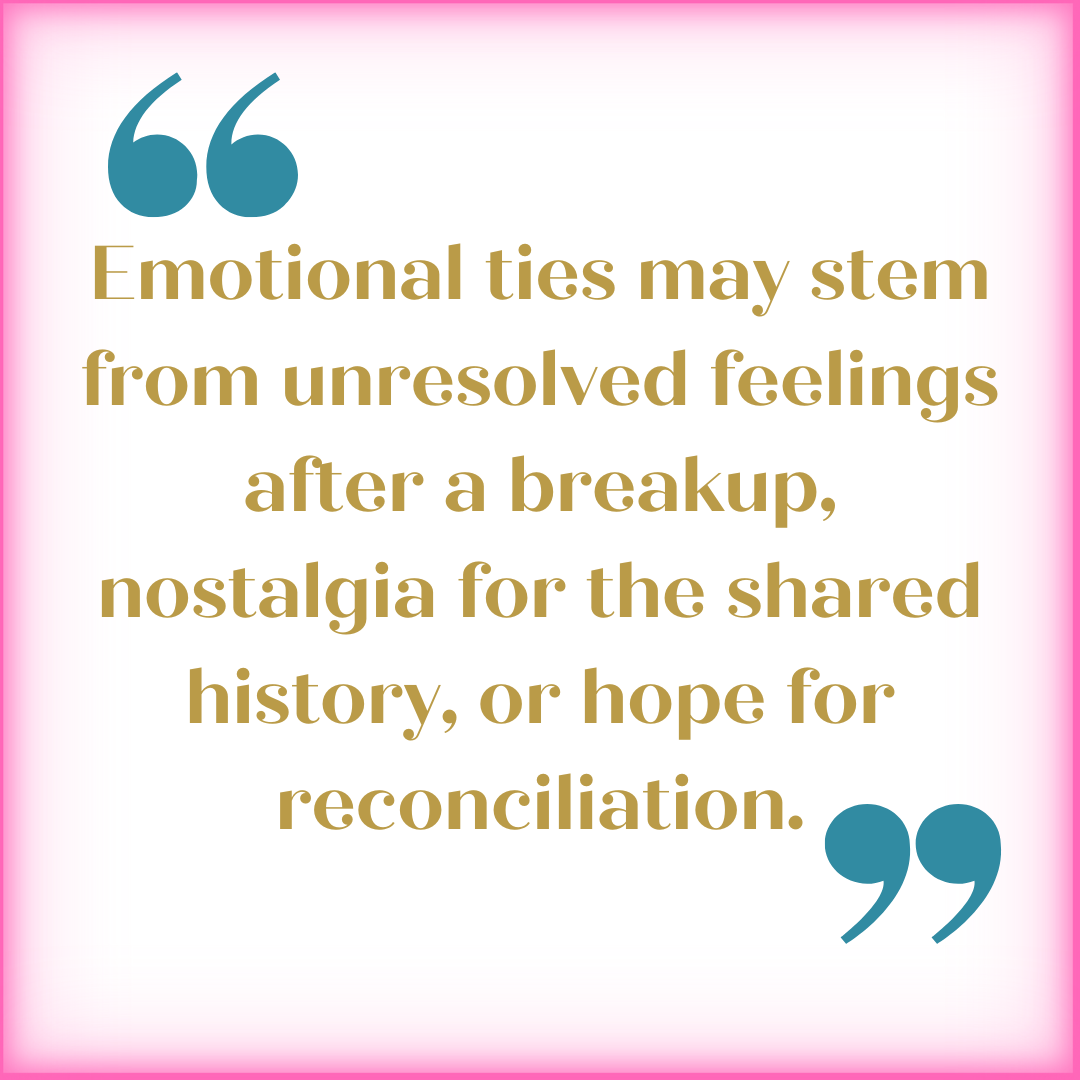




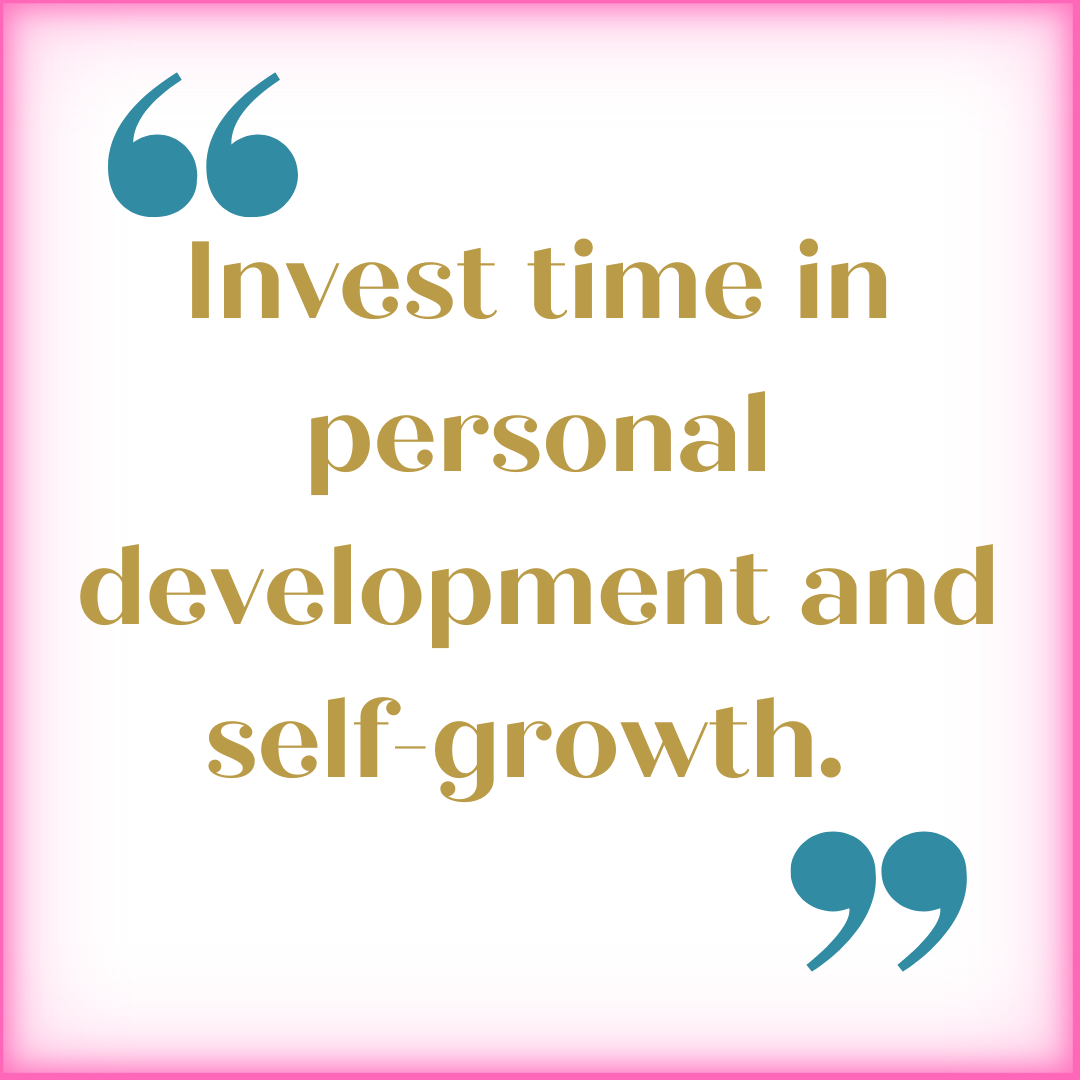
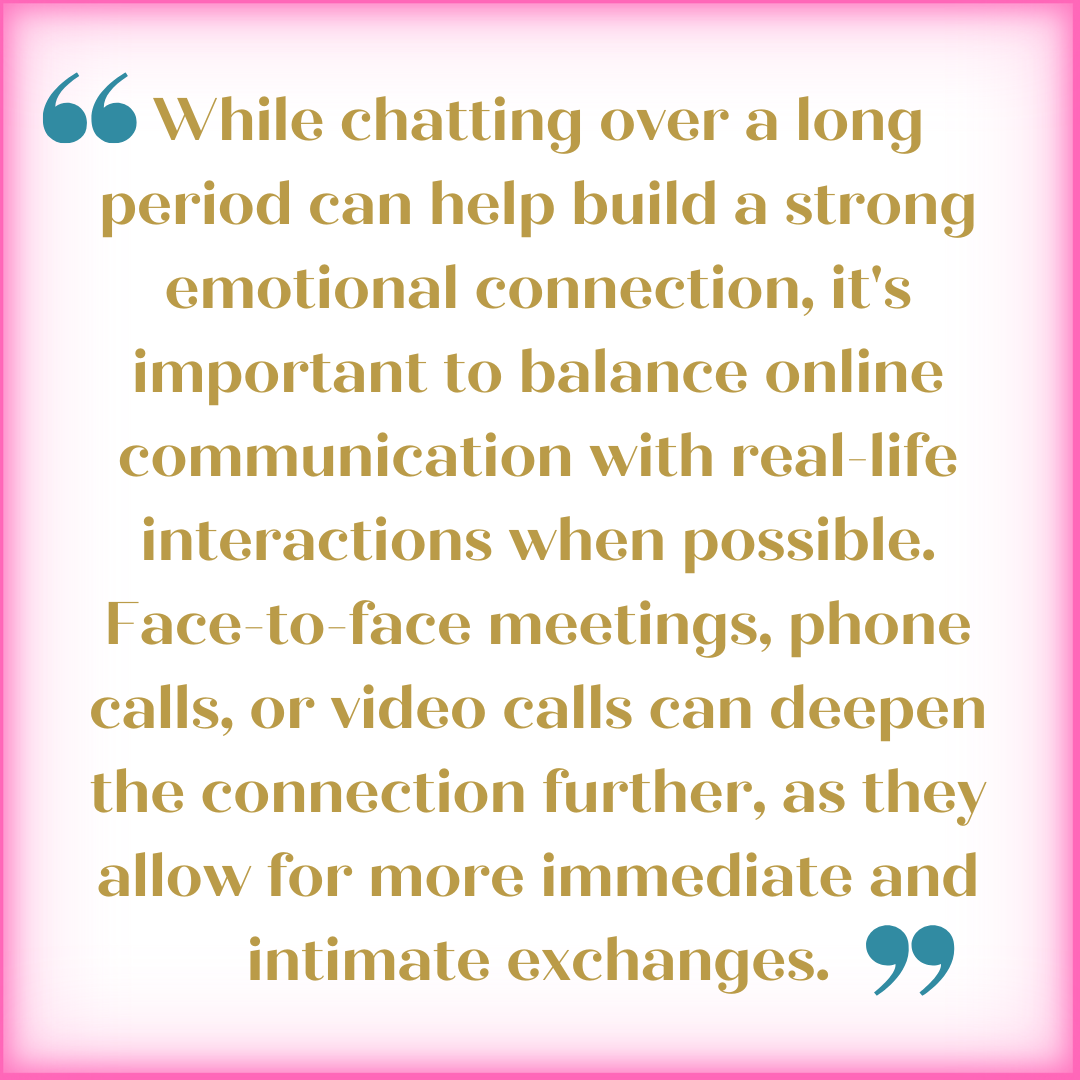


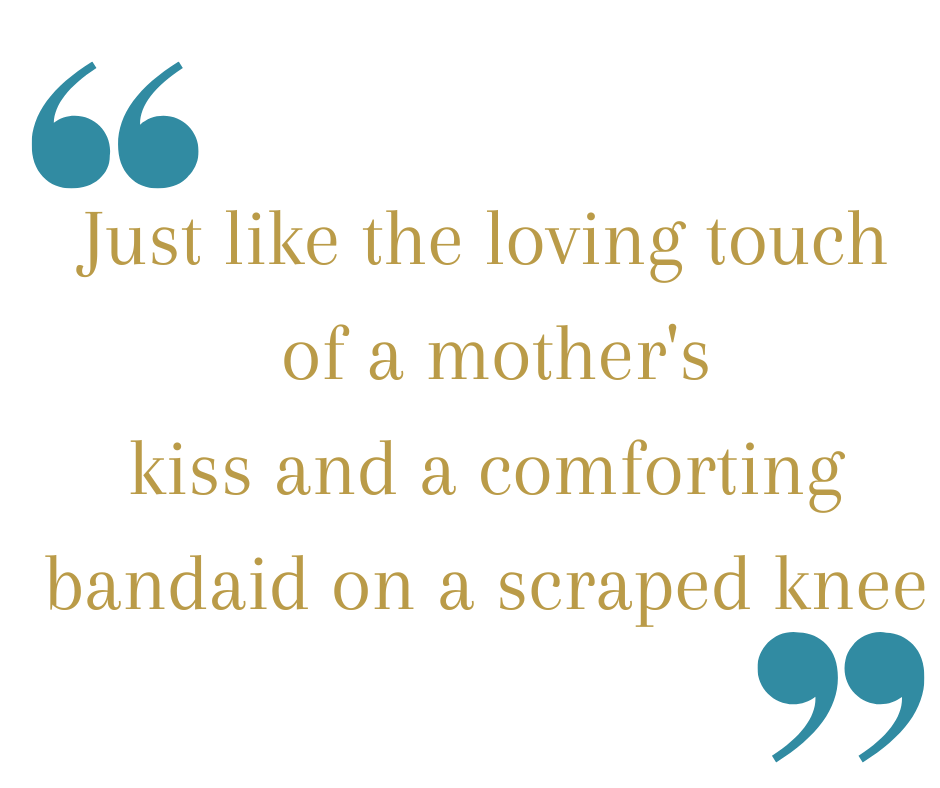
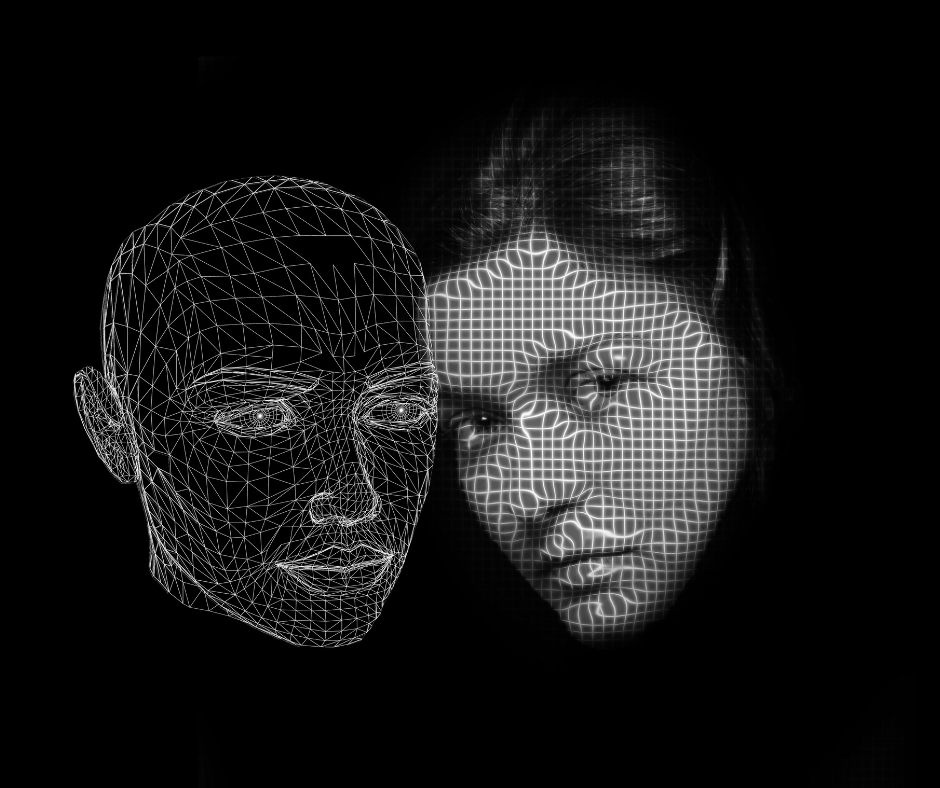

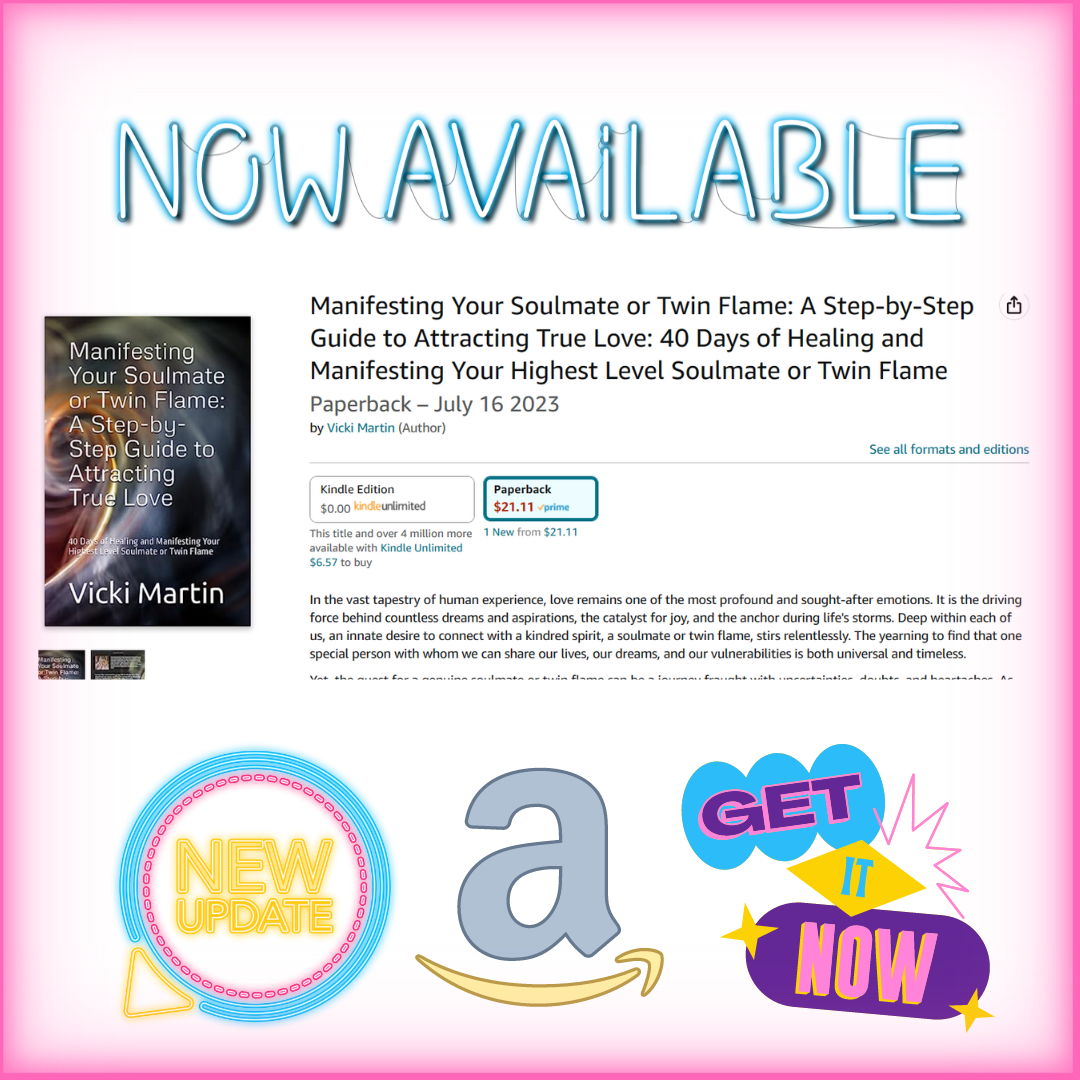


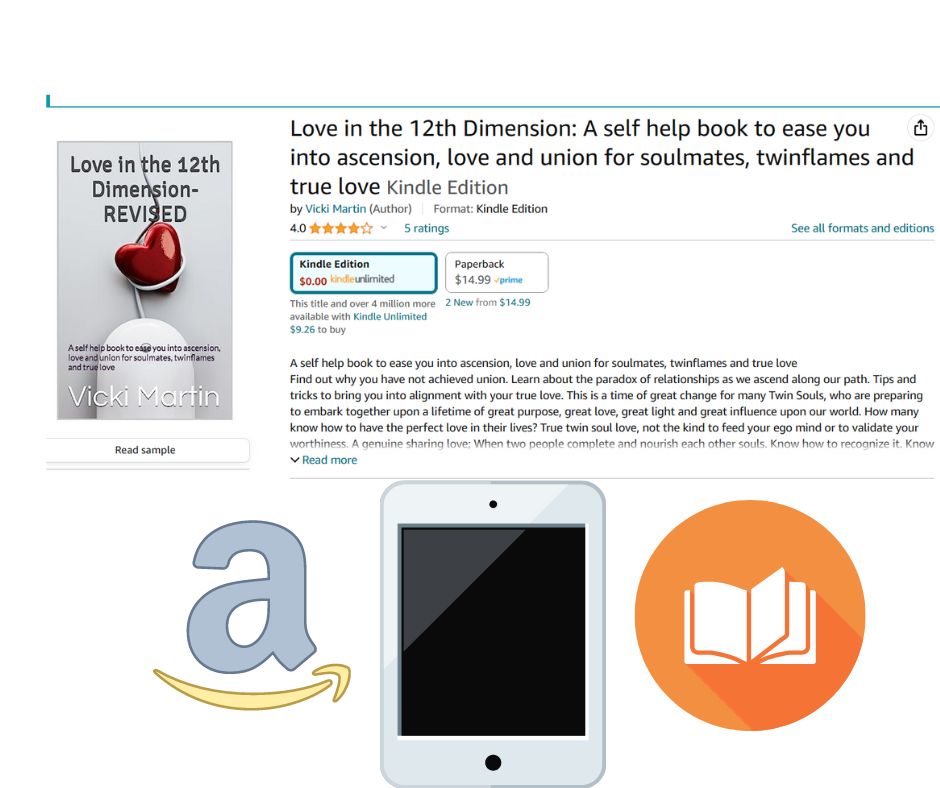
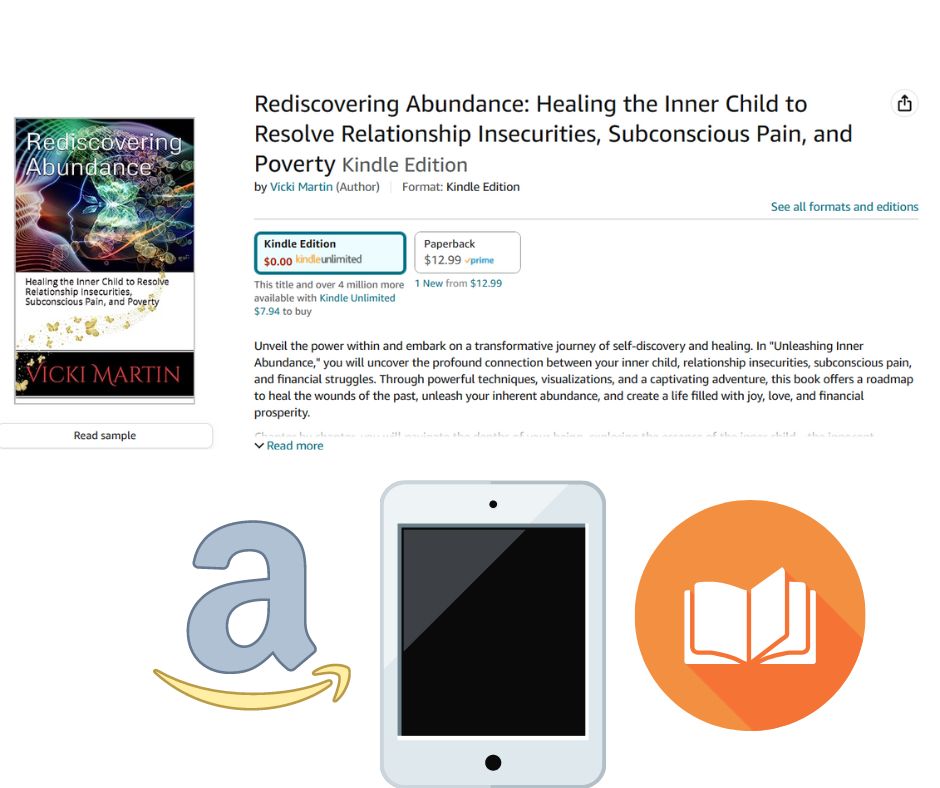


 RSS Feed
RSS Feed
